Enkianthus
RHS Lecture by Charles Williams
‘Why they should be more widely grown’
It was with some trepidation that I decided on a date to lecture about Enkianthus towards the middle of last summer. Enkianthus flower here at Burncoose and Caerhays from late April until early June. Sometimes, usually even, they perform on our stands at the Chelsea Flower Show on about 20th May but not every year is the same. Fortunately we seem to have hit it about right but sadly not all the species are available and out in flower to view today.
I have chosen to prepare a lecture about the little known Enkianthus for 3 reasons:-
a) Firstly I like them and we are and have been assembling a collection at Caerhays to foster my preference. Perhaps a National Collection one day?
b) Secondly, Enkianthus have exceptionally beautiful flowers but they are, and remain, little known and are not grown widely enough. So the purpose of today is to help you discover them too.
c) They are easy to grow and easy to propagate. More on this later.
1. History and Origin
Enkianthus were first discovered by a Portuguese Jesuit missionary with an unpronounceable name who lived in what we would today call Vietnam in 1790.
Taking cues from the flowers he created the genus name Enkianthus from the Greek words enkyos (pregnant) and anthos (flowers).
All Enkianthus species – and there are between 10 and 17 species depending on your botanical point of view – have clusters or racemes of campanulate flowers similar to those of related genera such as Gaultheria and Vaccinium. All are deciduous shrubs or small trees. However unlike Gaultheria and Vaccinium they all have seeds which are dry capsules rather than fleshy fruits and all have their leaves arranged in rounded whorls. This is one of the most distinctive characteristics of all species of Enkianthus which gives the plants a tabulated or tiered effect in maturity.
The individual flowers of Enkianthus are pendulous with a bell or pitcher shape composed of five lobes.
In the wild Enkianthus are found in East Asia, in a range from the Eastern Himalayas and North into China and Japan. China is host to 7 species and Japan to 3 species.
2. The Japanese Species – E. campanulatus, E. cernuus and E. perulatus.
These are the most common varieties grown in the UK today because they were more readily available to botanists and collectors in Japan well before the great plant hunters, George Forrest and Ernest Wilson, had begun to explore in Yunnan and Szechwan from around 1902. For trading reasons Japan was more accessible to Western Europe than China beyond the Himalayas.
a) E. campanulatus
This is the most widely cultivated species and is endemic to much of Japan where it colonises mountain slopes. It was introduced to the UK by Charles Maries on behalf of Veitch Nurseries in Exeter which closed in 1913.
There are 4 recognised ‘varieties’ in the species which is to be expected in view of its wide geographical coverage from Hokkaido to Honshu islands in Japan. Hopefully we can show you 3 of these today.
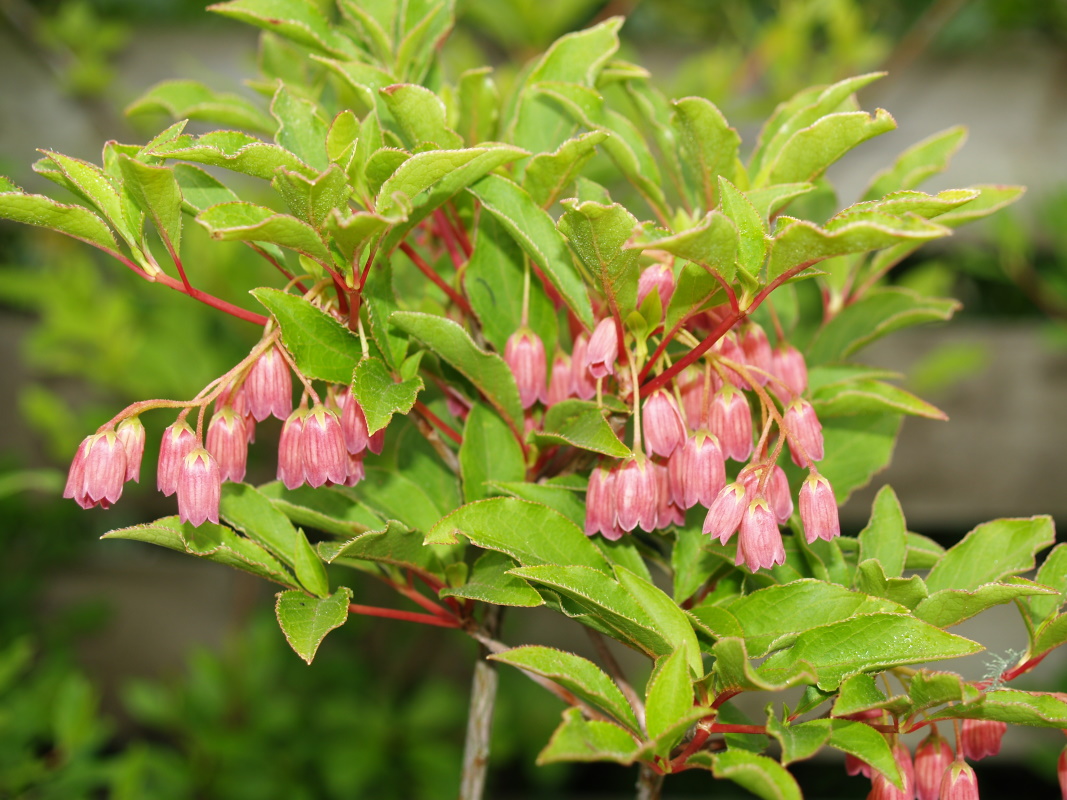
i) var campanulatus (‘Ruby Glow’) – this has pale yellow to reddish flowers with a bell (or corolla) length of 7-8mm
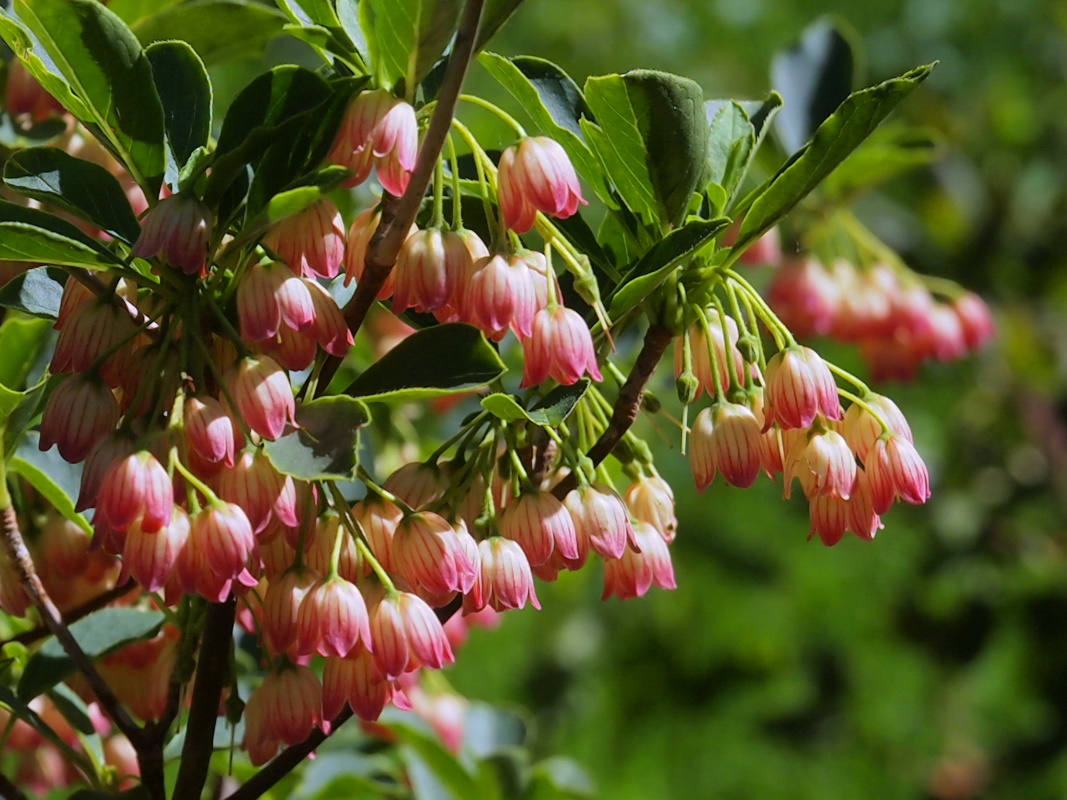
ii) var palibinii – this form is entirely red or perhaps light red with darker red stripes. The corolla length here is shorter at 5-6mm.
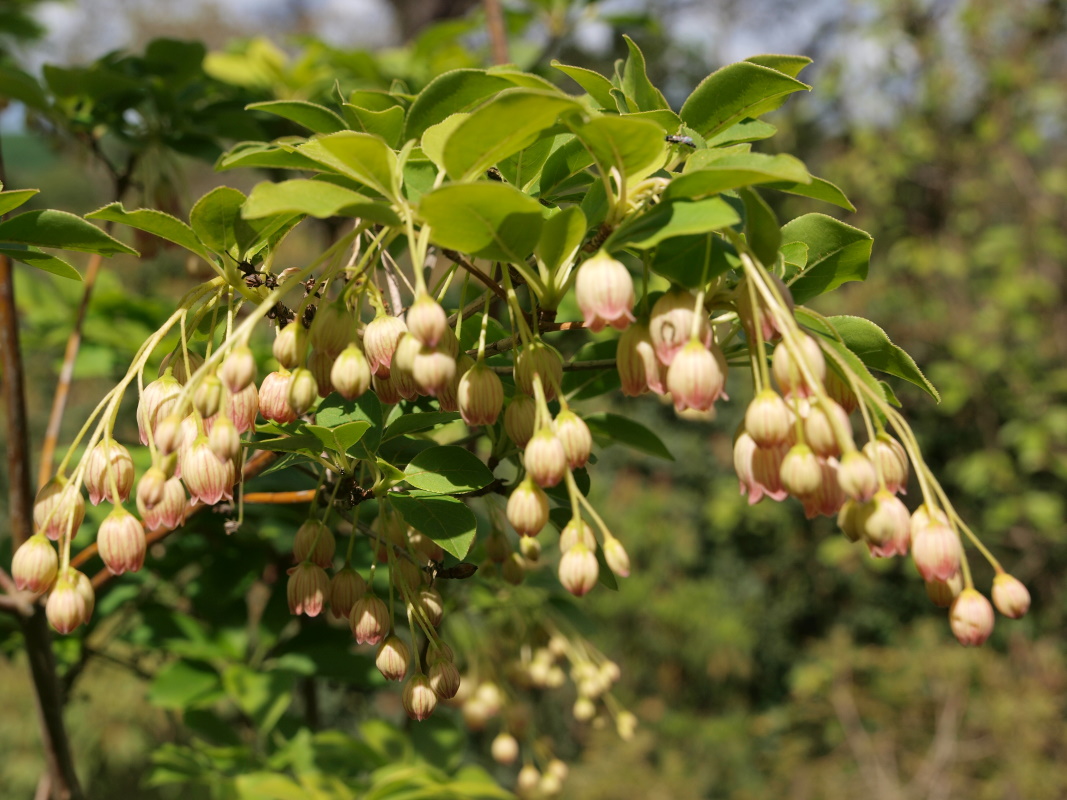
iii) var sikokianus – this form has far longer racemes of flowers with 8-20 flowers per raceme or cluster instead of 10 or so in other forms of E. campanulatus. You may not see this in the young plants here today and, again, the colour can be variable but basically reddish.
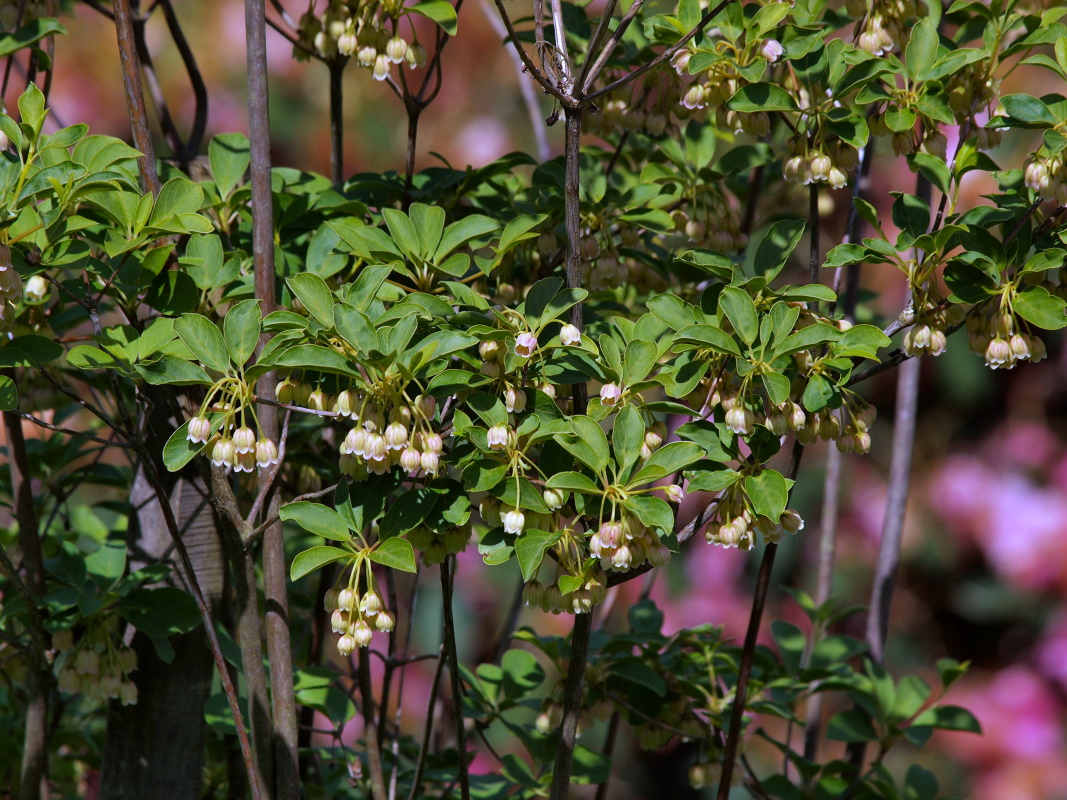
iv) var albiflorus – this is an attractive white flowered form. The elderly plants at Caerhays have relatively small clusters of white flowers and they are best seen from below so planting above a path is recommended.
b) Enkianthus cernuus (Nodding Enkianthus) and E.cernuus rubens
This species is easily differentiated from E. campanulatus by its dissected or pointed calyx lobes, smaller stature and smaller flowers borne in a raceme rather than as a cluster. Despite these very obvious characteristics there has been immense confusion and mislabelling in the nursery trade which persists today.
E. cernuus rubens is the best and darkest red flower of all Enkianthus and has easily the smallest bells. Nevertheless much of what is sold as E. cernuus rubens indeed have reddish flowers but most are in fact E. campanulatus. Many of our customers have discovered this after a period of time and Burncoose has, in the past, been guilty of unwittingly selling E. campanulatus as E. cernuus rubens. We think that we have overcome the problem by cutting out the suppliers involved but we are by no means alone in our guilt within the nursery trade.
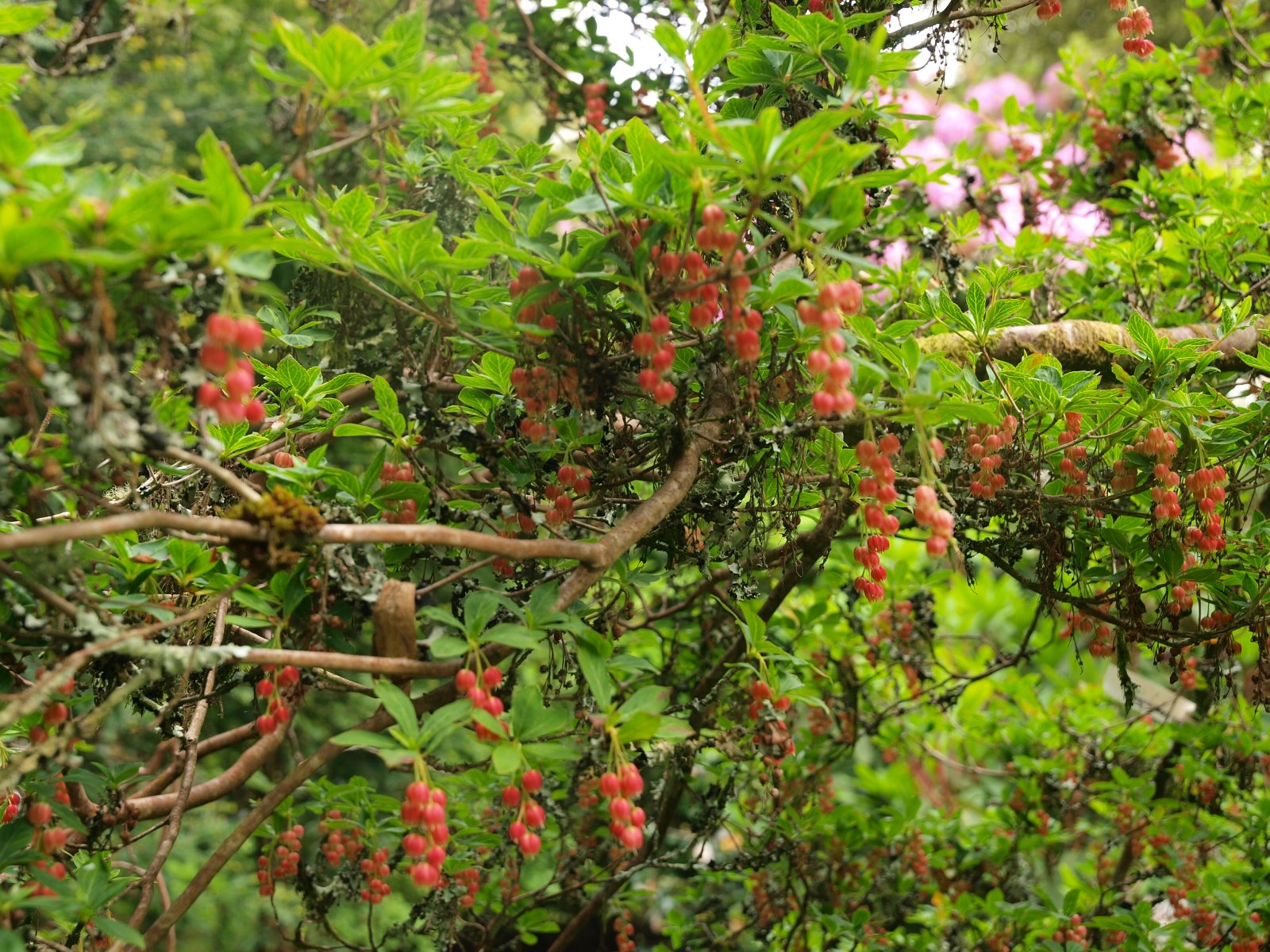
E. cernuus rubens
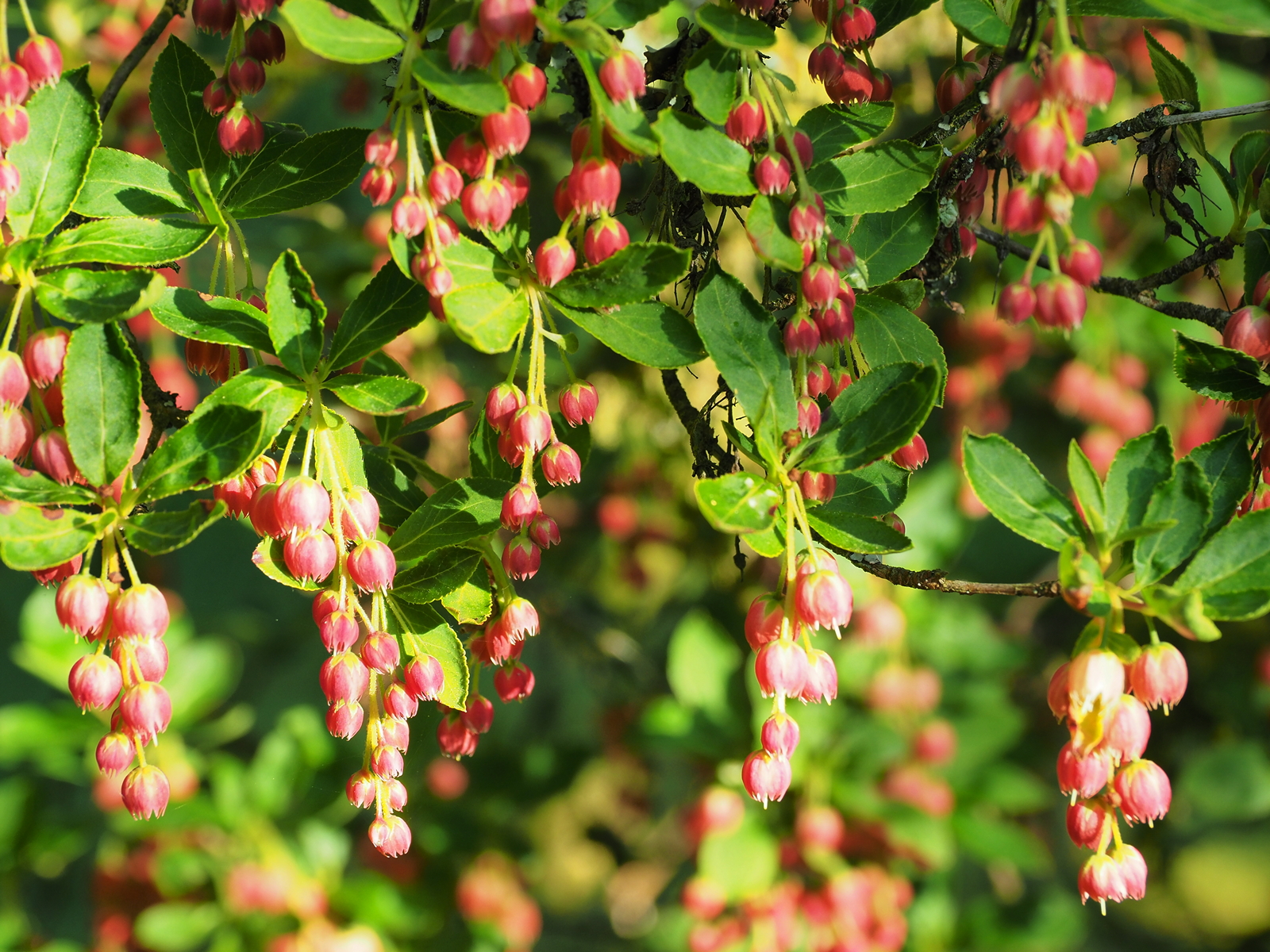
E. cernuus rubens
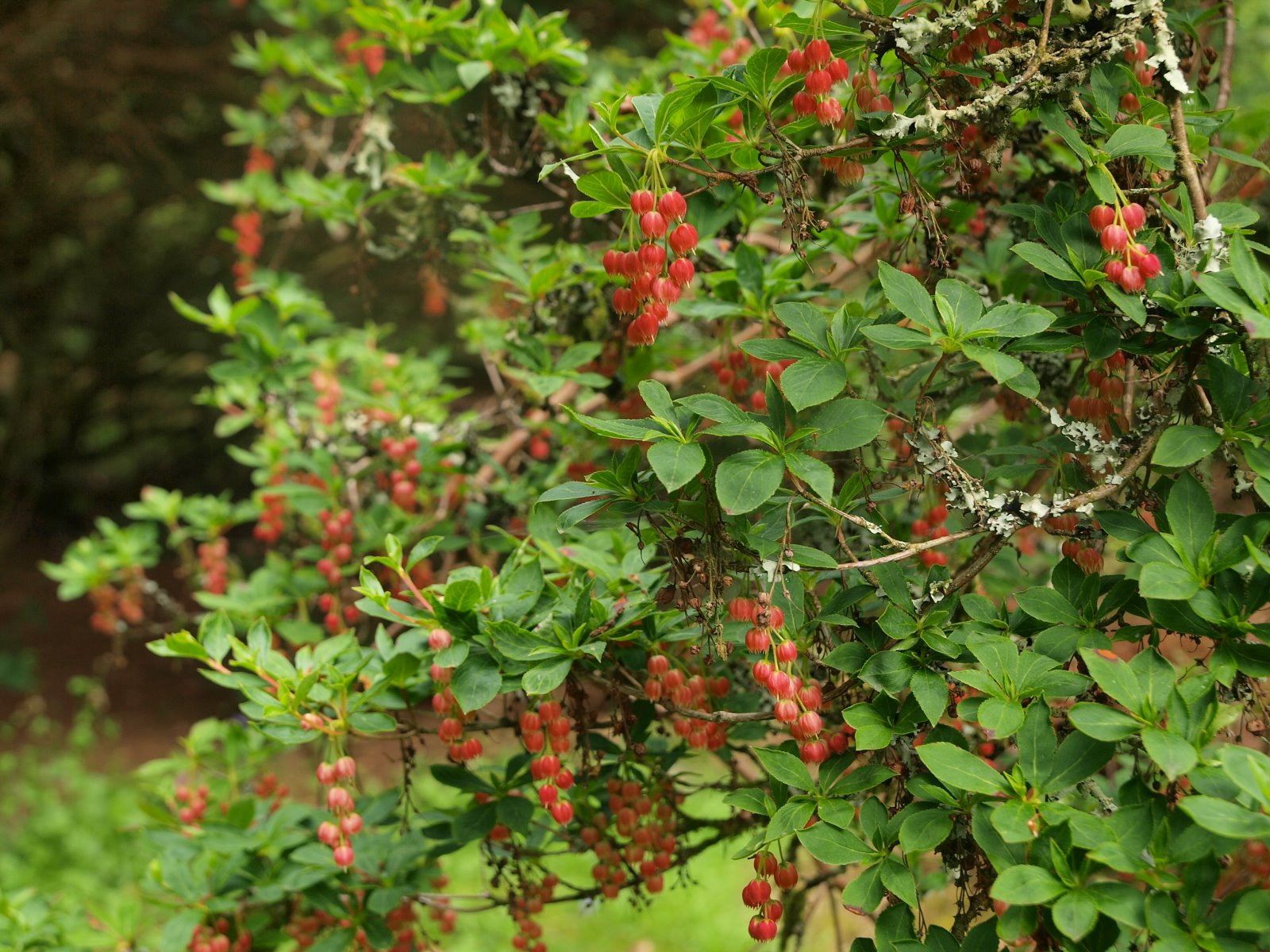
E. cernuus rubens
Now that we know what to look for in terms of leaf size and habit these give clear guidance. However, when plants are dormant, or when young plants exhibit vigorous new growth in the spring without producing flowers, it can be difficult to be certain.
E. cernuus rubens is slightly less hardy than other species but this need not concern us in the UK.
To summarise E. cernuus has bells which end in a point; the points all turn inwards towards the centre or female reproductive parts. No other Enkianthus has bells which look or are shaped anything like this.
c) E. perulatus
This species is found in Taiwan as well as Kyushu and Honshu islands in Japan.
It is easily identifiable at Burncoose because the flowers appear before or with the leaves in mid spring. The species was discovered by Sir Rutherford Alcock, the first British diplomat in Japan in Nagasaki in 1859.
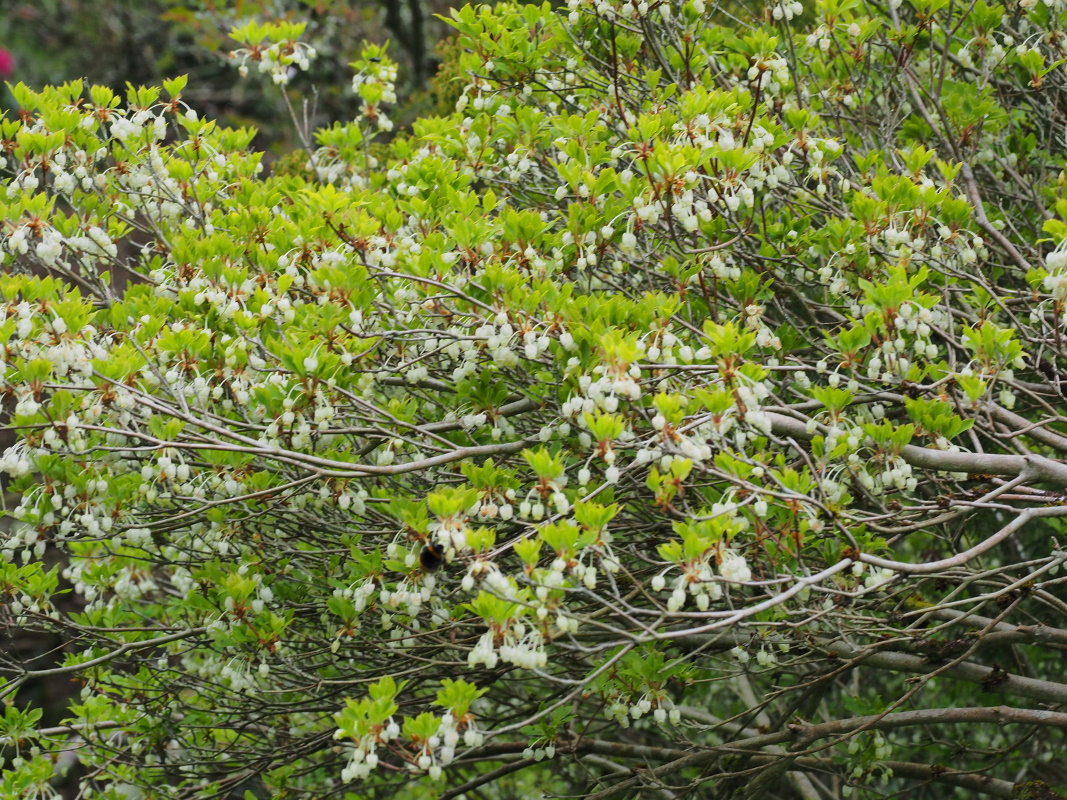
E. perulatus
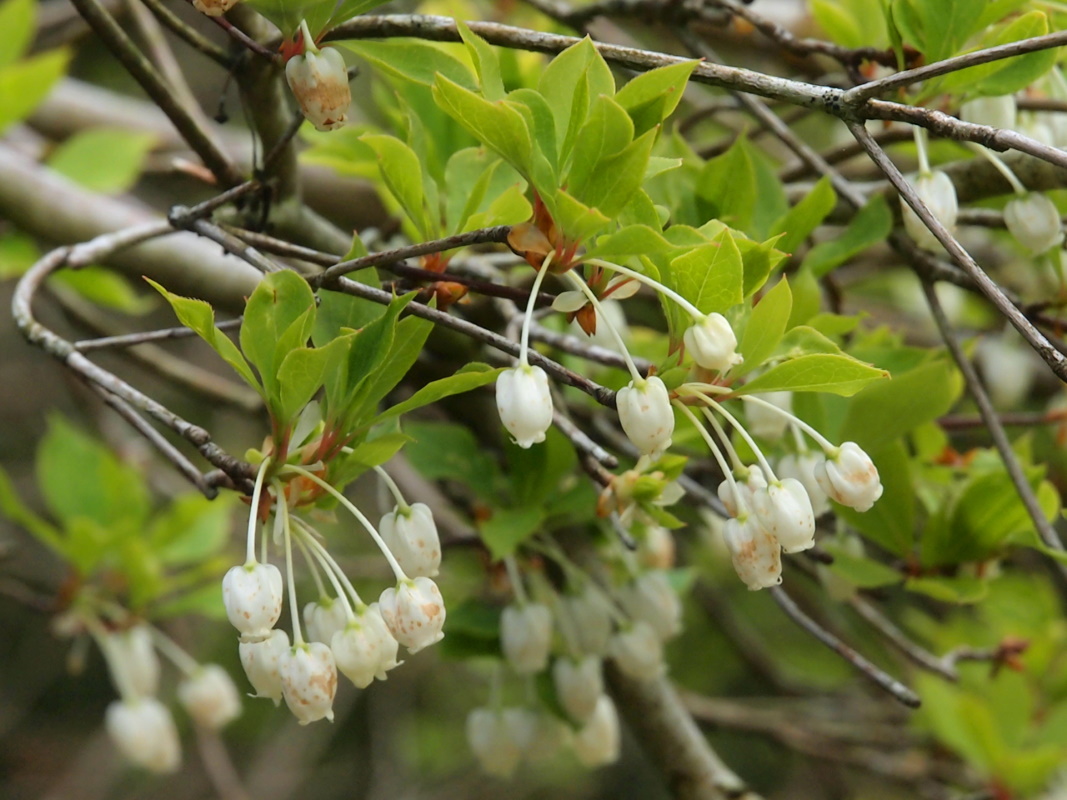
E. perulatus
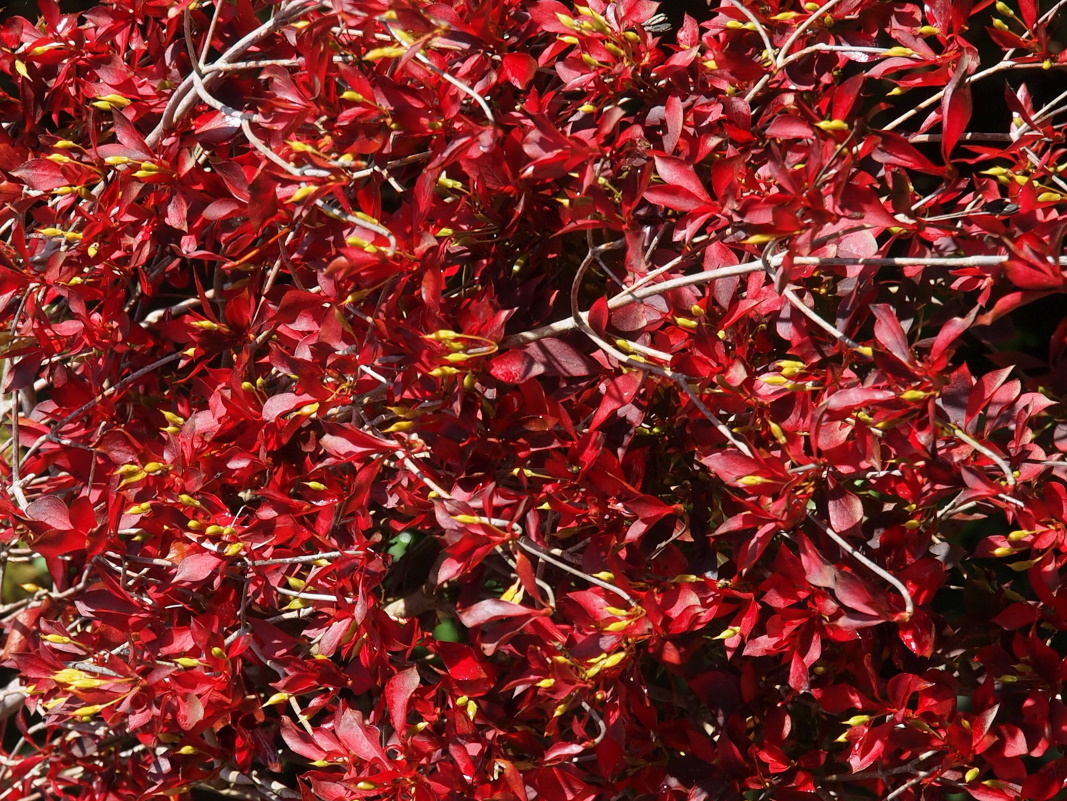
E. perulatus
E. perulatus is the second most common species in cultivation and has white flowers again with a very distinctive shape. The white bells may not appear impressive from a distance but close up they have a distinctly rounded base rather than the points at the end of the calyx lobes of E. cernuus or the ‘frills’ of E. campanulatus varieties.
The habit of the plant at Burncoose is that of a rounded shrub which responds well to pruning.
3. The Chinese Species – E. chinensis, E. deflexus and E. serrulatus
There are 3 further Chinese species which are not grown by the horticultural trade in the UK or Holland so far as I am aware. These are E. pauciflorus, E. quinqueflorus and E. serrulatus. They are grown in the US but Phytophthora ramorum here and Sudden Oak Death in California mean that the importation of all plants across the Atlantic is prohibited.
They are similar in habit and form to the Japanese species and grow into large clumps or small trees eventually like E. campanulatus. They are all however rather larger growing (to 12 feet eventually) than E. cernuus and E. perulatus although arguably more upright and less spreading.
a) E. chinensis
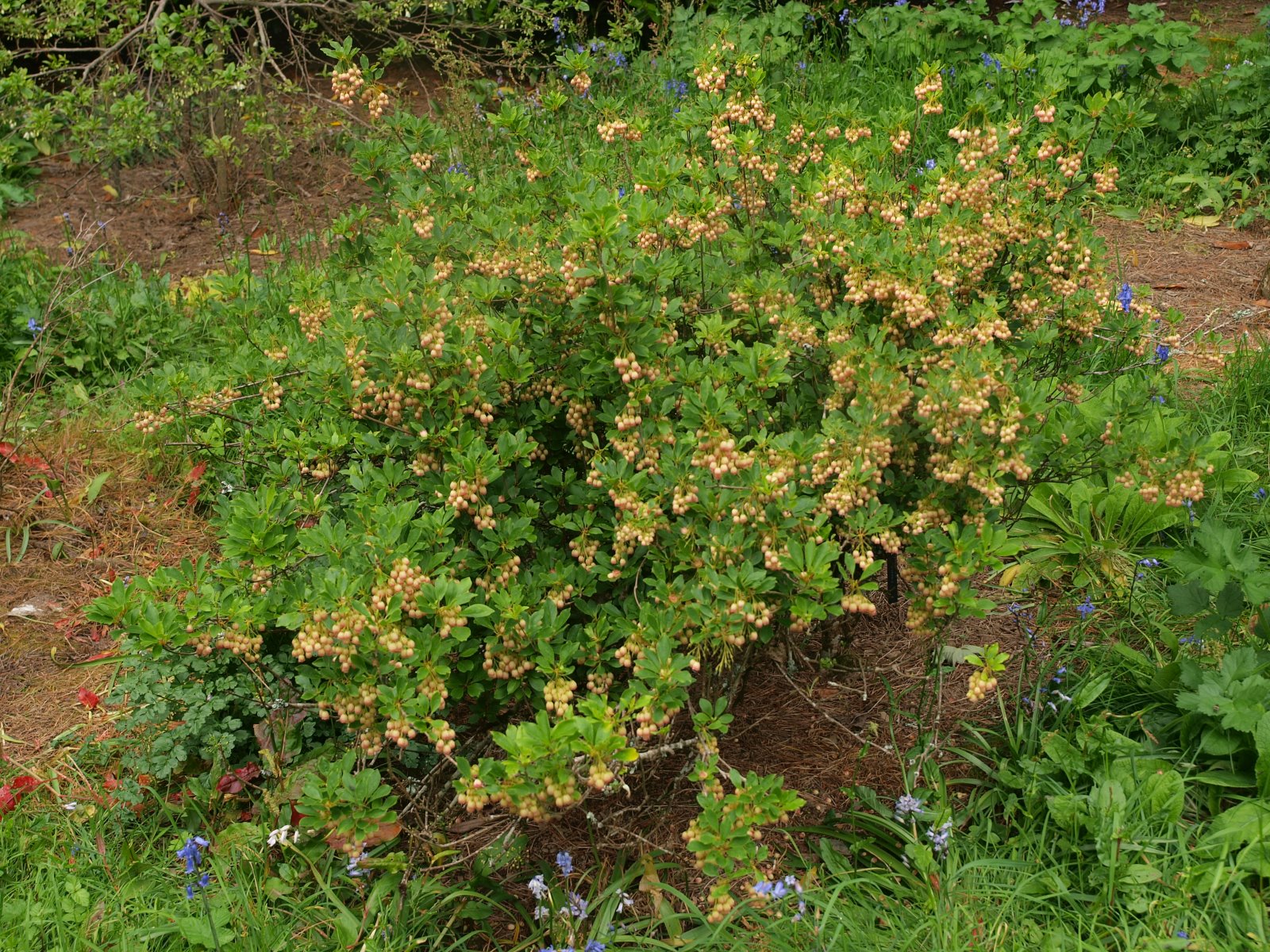
E. chinensis
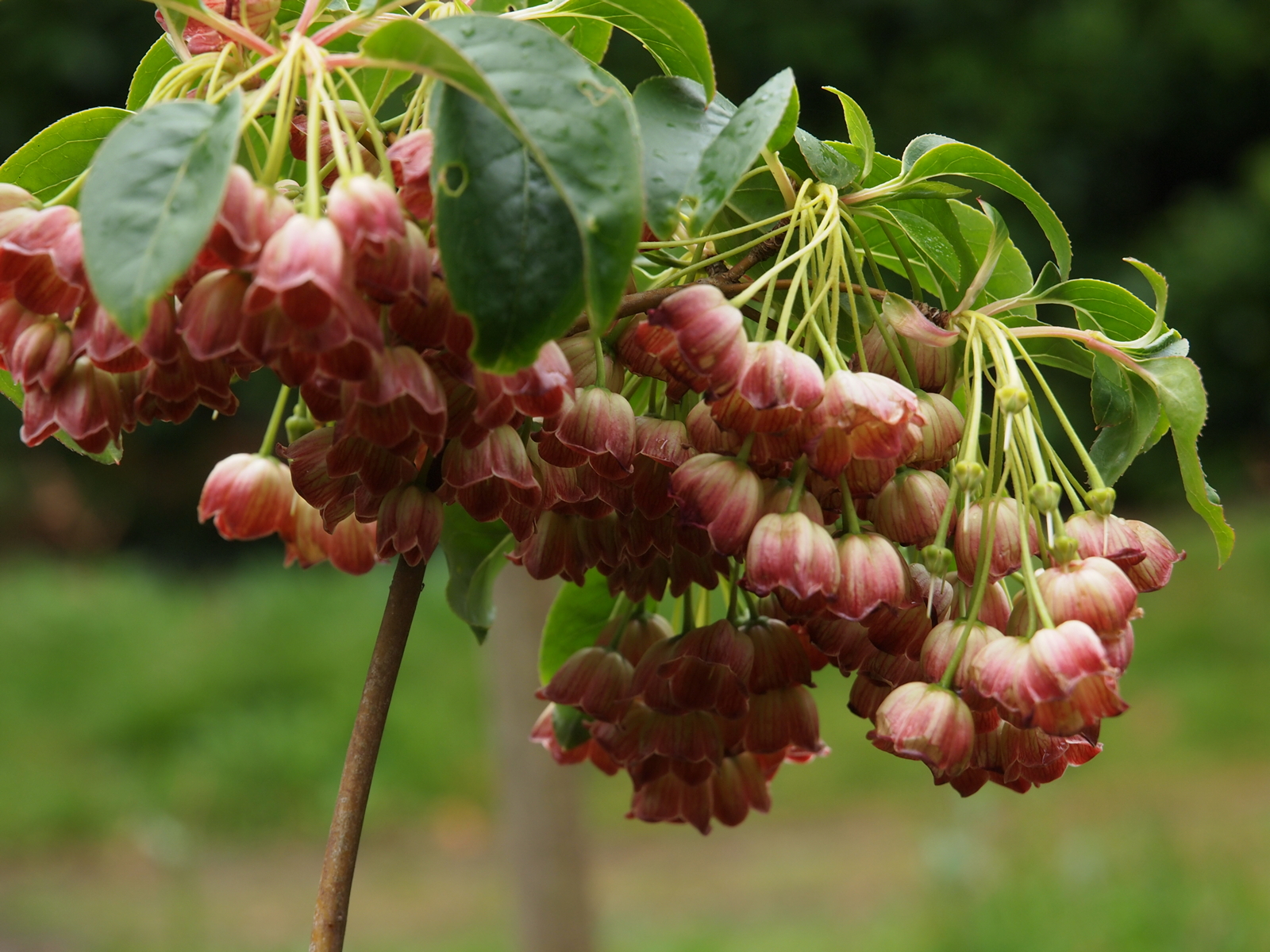
E. chinensis
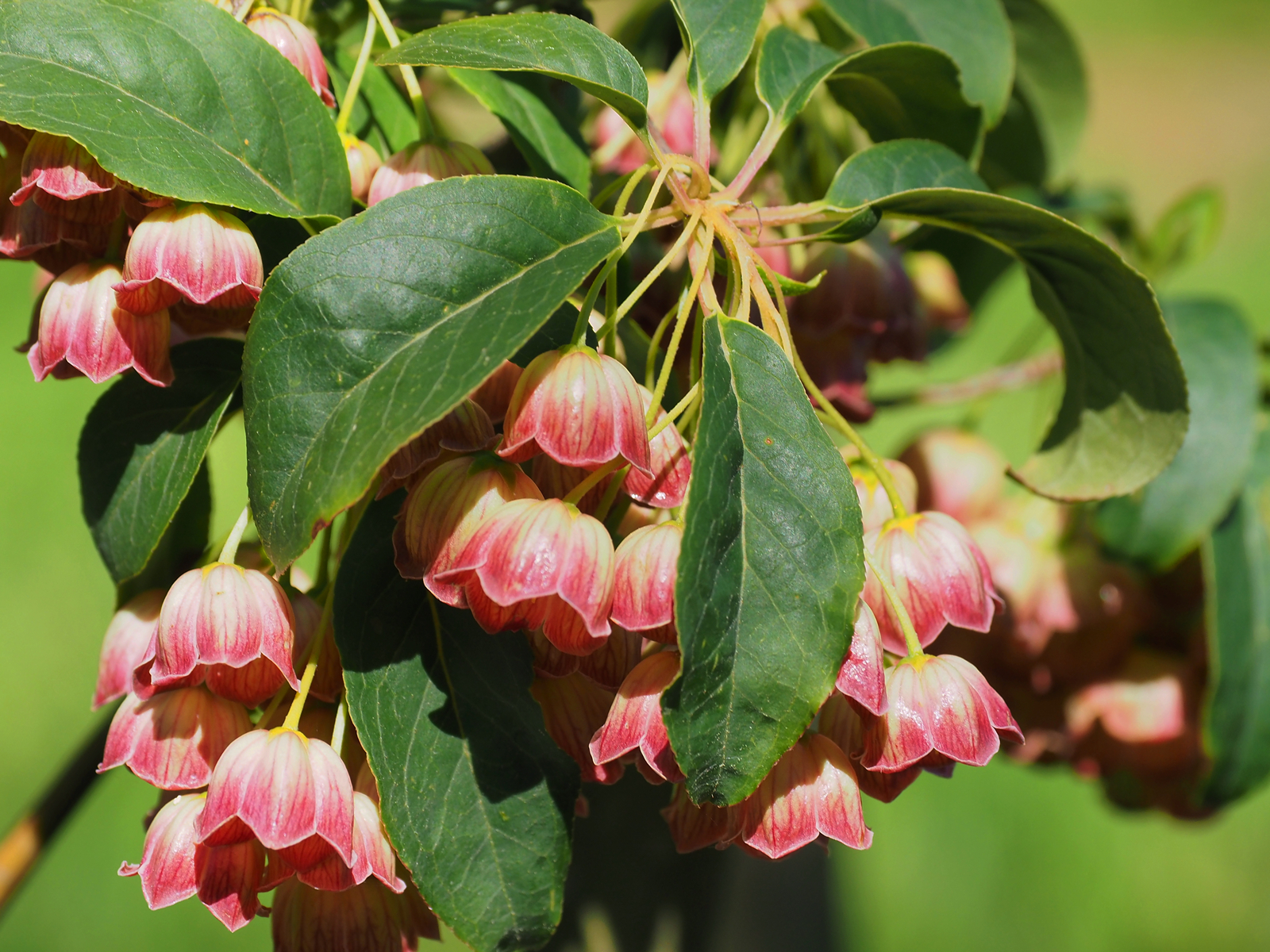
E. chinensis
Over the years as I have collected plants from a variety of UK and continental nurseries under different names many have in fact turned out to be E. chinensis.
It is an attractive species and particularly easy to grow. The flower or bells are striped with yellow, orange and red but have a creamy appearance with a pronounced pinkish-red or rose picotee edging at the base when viewed from a small distance.
Whereas E. campanulatus varieties tend to have bells which are all of one single colour (albeit striped) E. chinensis is readily identifiable by it picotee edging. It is usually one of the last species to flower in late May and on into June and is one of the most floriferous species.
It is also a relatively recent introduction to the UK dating from the Sino-American Botanical Expedition of 1980 although it was recorded in the Kew Botanical Magazine much earlier and is certainly included in Bean in 1973.
b) E. deflexus
This is my clear favourite as regards colour. It has a similar habit to E. chinensis and again nursery labelling has got muddled here in the past.
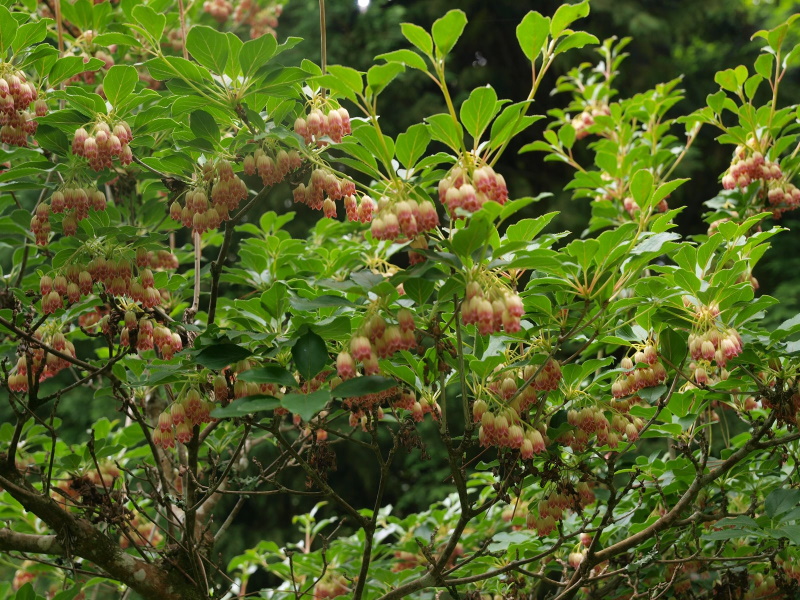
E. deflexus
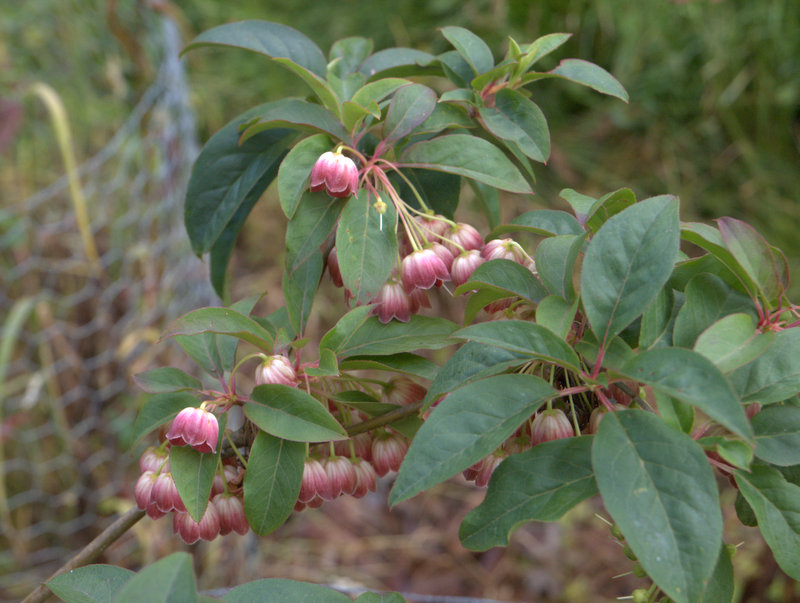
E. deflexus
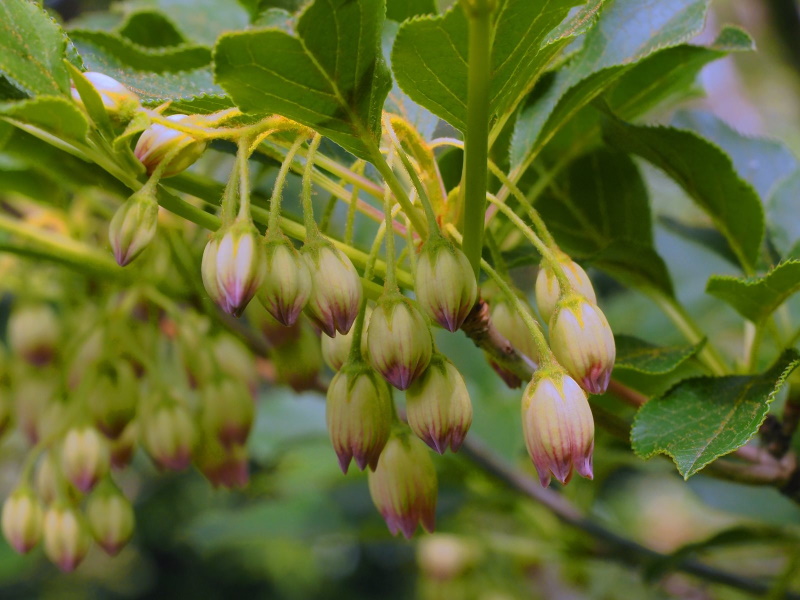
E. deflexus
It comes from Bhutan, across Northeast India, Burma, Nepal and Sikkim as well as China and is widely distributed in forests ranging in height from 1,000 to 3,000 feet. It was first introduced by Wilson in 1908.
The bells are yellowish red with darker lines and the picotee edge is a deep red verging on purple.
The leaves have hairs on both sides and are produced in clusters at the end of the shoot. Pubescent leaves are what really differentiate it from E. chinensis.
Wilson describes E. deflexus as one of the most beautiful shrubs in the Western Chinese mountains even being found up to 11,000 feet. Bean indicates that it is not fully hardy but this has now been proven to be false and is an odd statement bearing in mind the altitudes it grows at.
I would entirely agreed with Wilson’s contention.
c) E. serrulatus
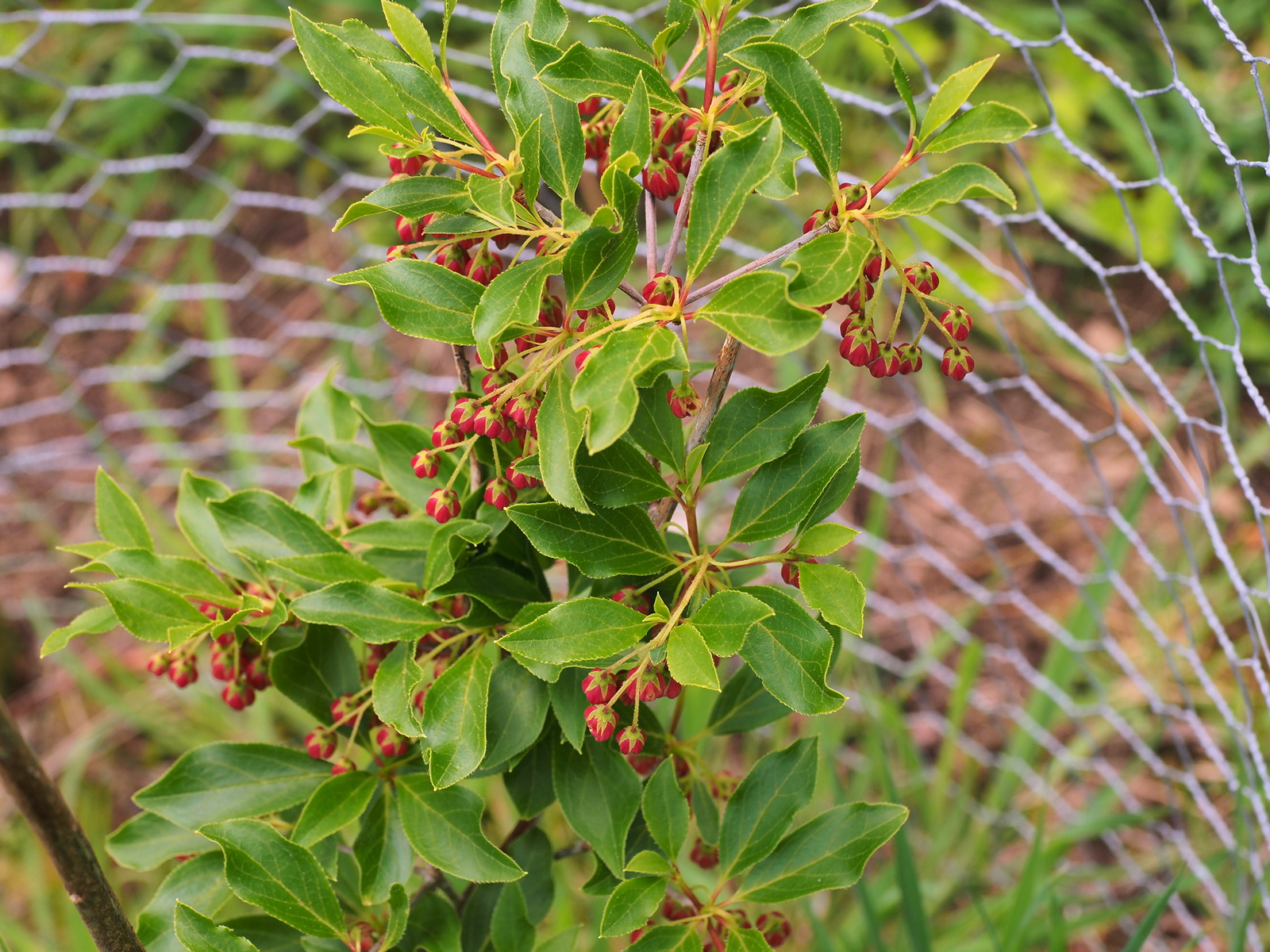
E. serrulatus
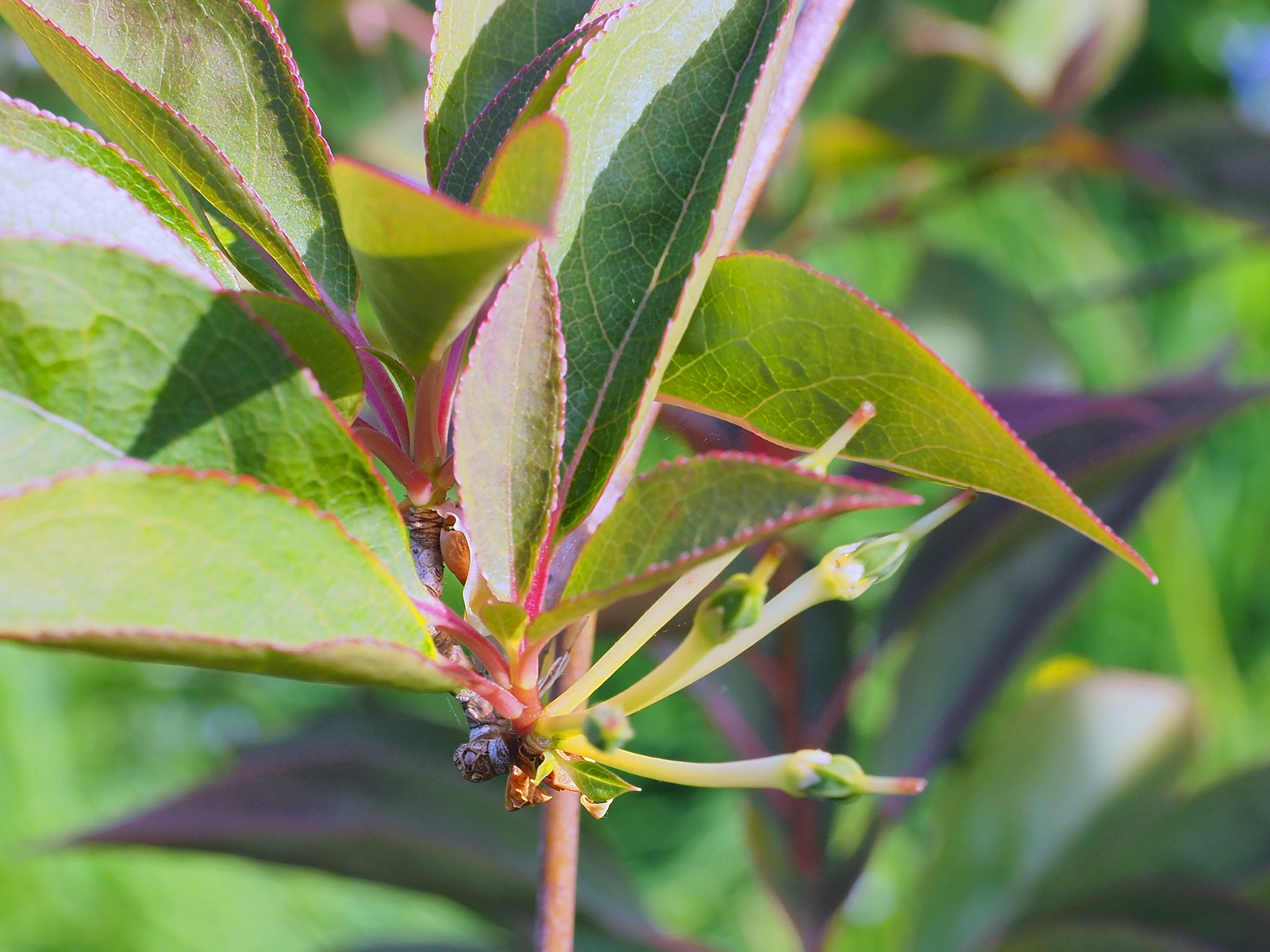
E. serrulatus
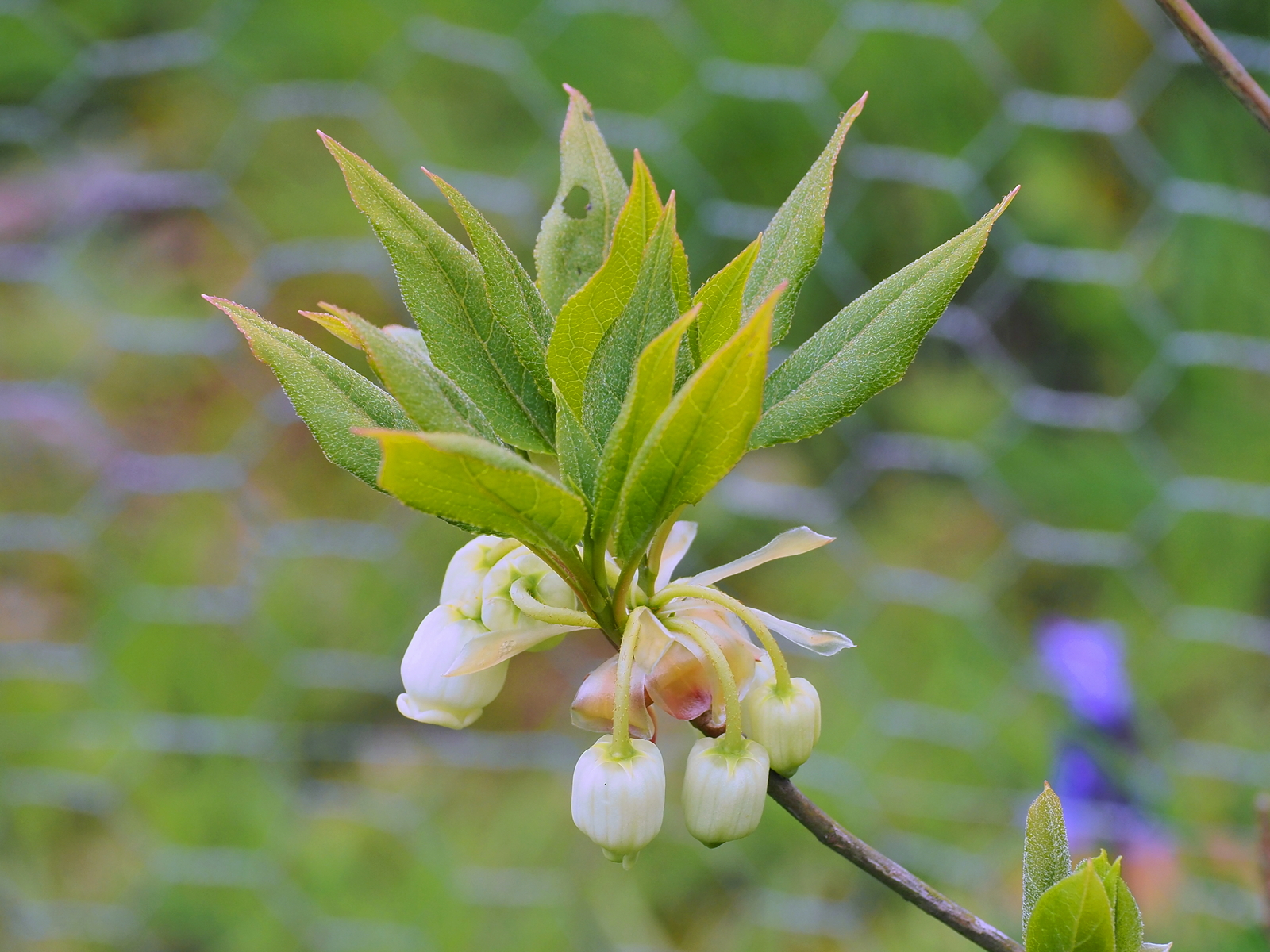
E. serrulatus
This species does not grow at Caerhays or Burncoose but there are well established plants at Tregrehan Garden.
It is perhaps taller growing and even more upright than other species. At Tregrehan it will soon reach 15 feet.
E. serrulatus has white flowers which are larger than other species and has elliptic finely toothed leaves.
This species is still rare in cultivation and comes from South East and central China.
4. Named Hybrids
As a result of deliberate or accidental hybridisation work by Esveld Nurseries in Holland there are already a number of named cultivars and hybrids of the more common species which are, if anything, even more exotic and beautiful. Nearly all are forms of E. campanulatus and a few of the best are already 6-9 feet in height and growing in one location at Caerhays.
The best which we have on display today are:-
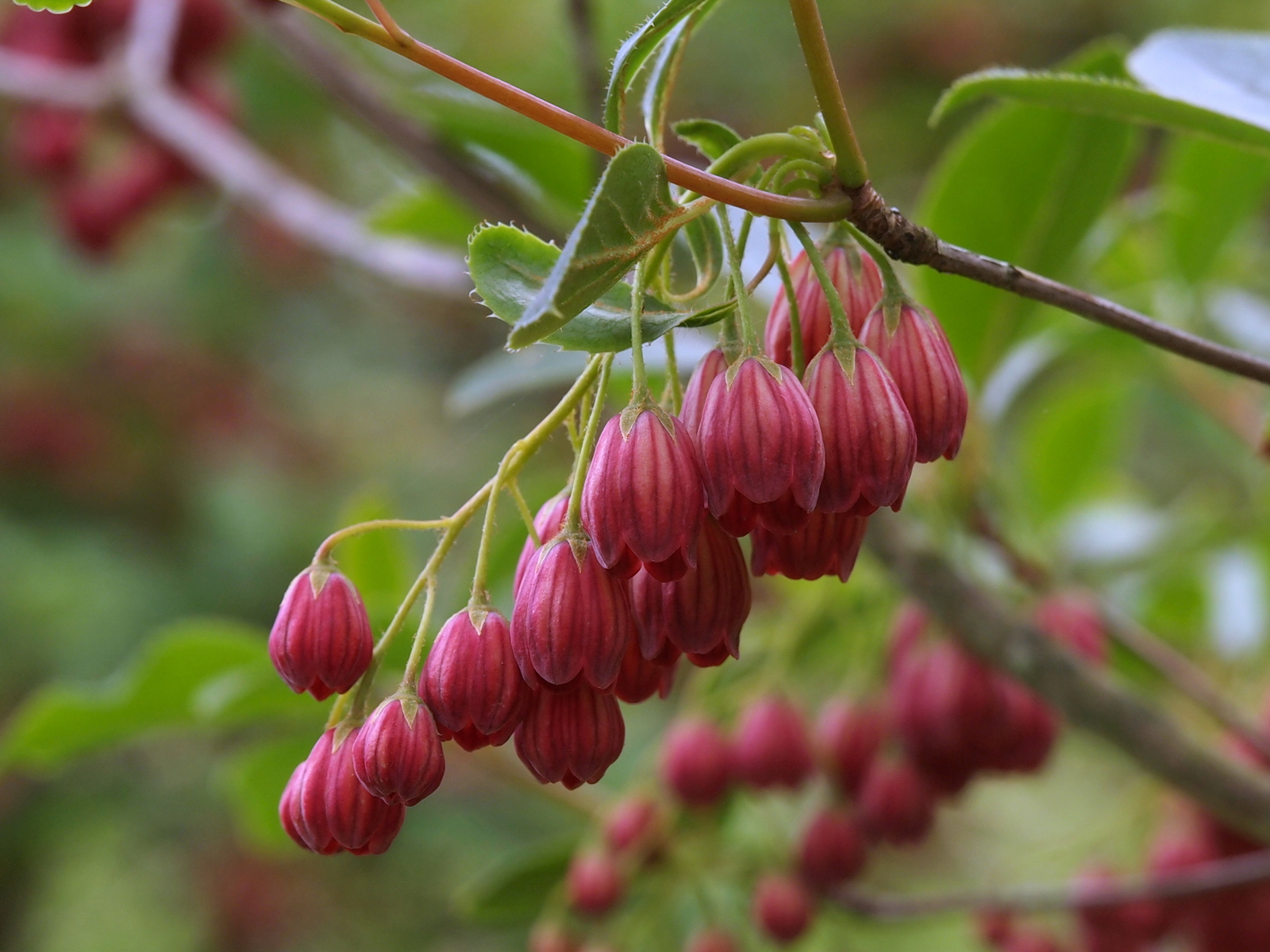
E.camp. ‘Hollandia’
(‘Hollandia Red’)
This cultivar has pale, creamy pink bell flowers with a heavy rose-pink picotee edge.
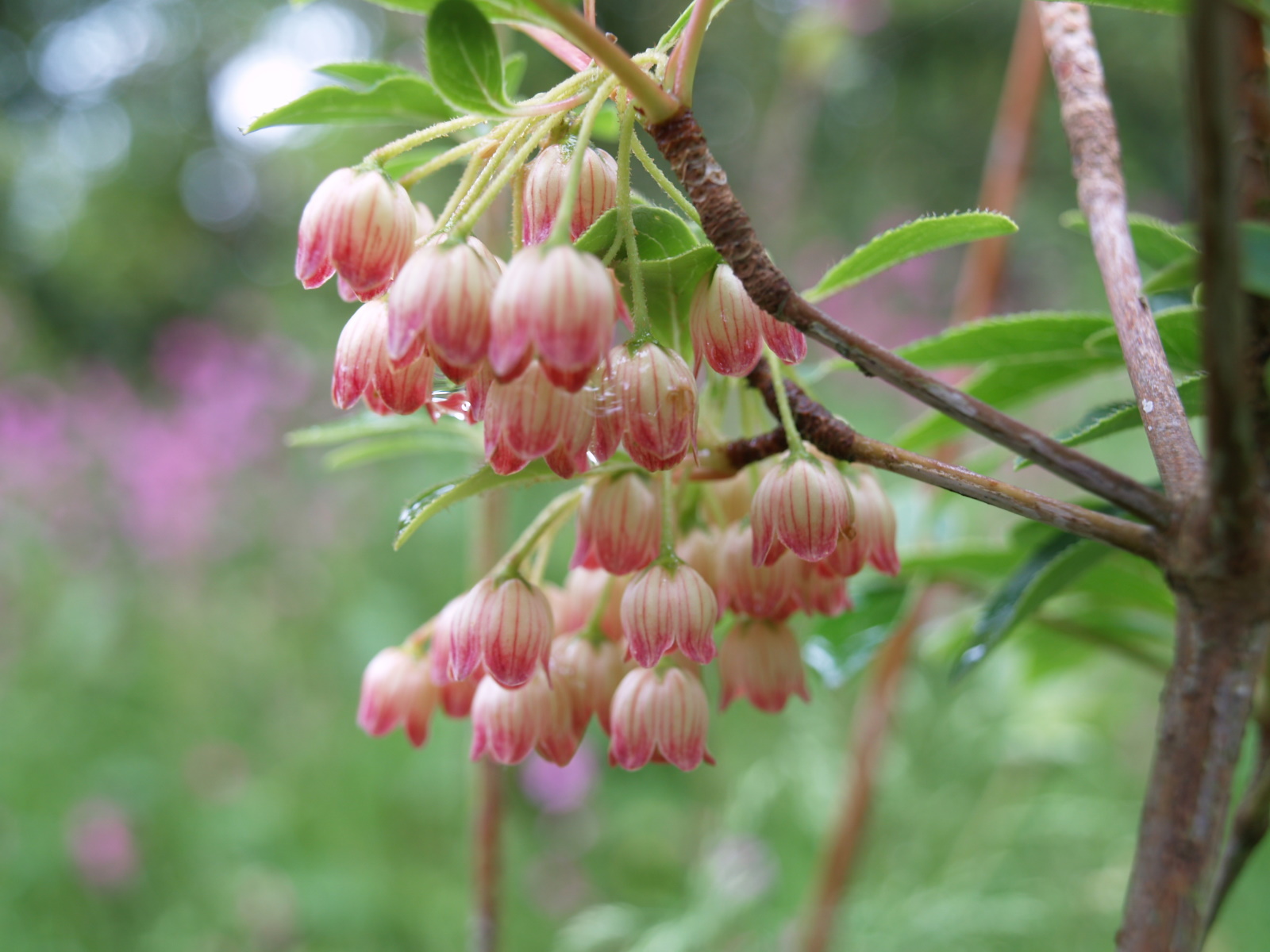
E.camp. ‘Red Bells’
Although this is often sold in the nursery trade as a named variety (and is very probably one of the root causes of the confusion with E. cernuus) it is a fairly typical variant of the true species.
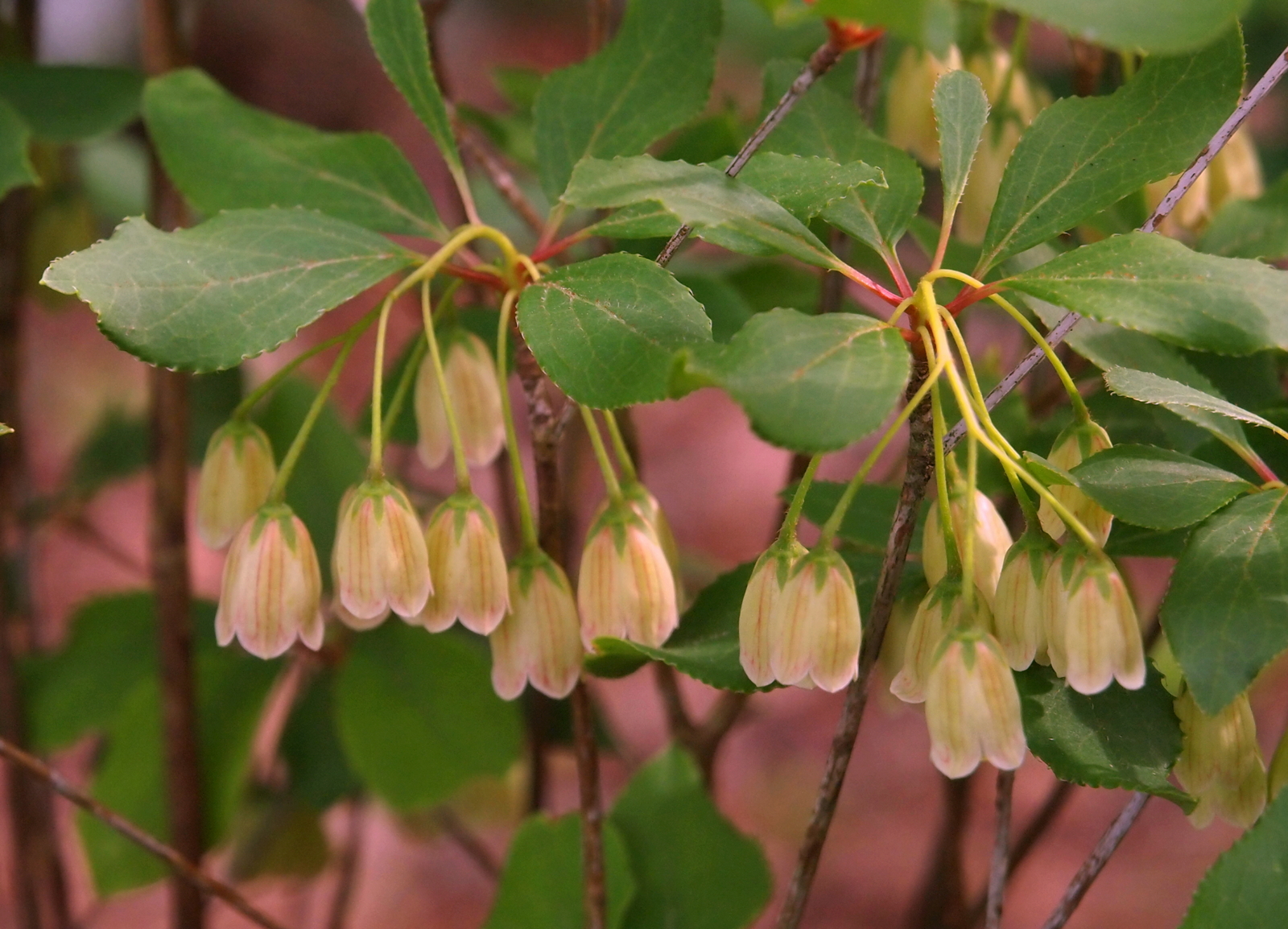
E.camp. ‘Wallaby’
This is the only truly dwarf cultivar of Enkianthus which we have seen. It has a very compact habit and creamy white flowers. It is really a rockery plant and very slow growing.
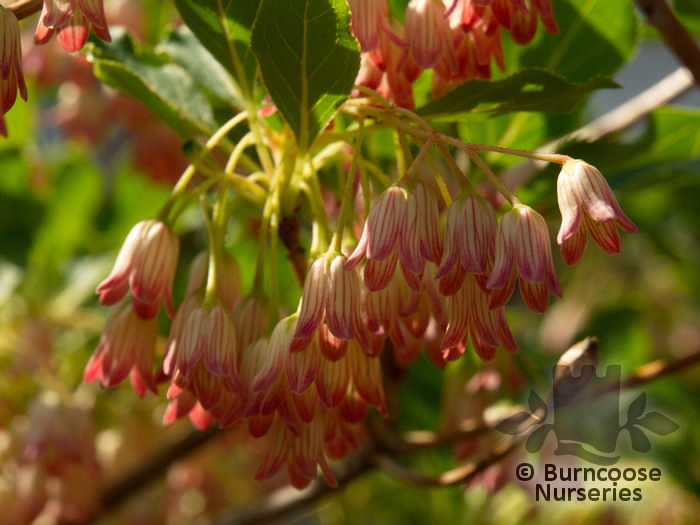
E.camp. ‘Red Velvet’
This has pure (i.e. one coloured) bell flowers that are rose-pink.
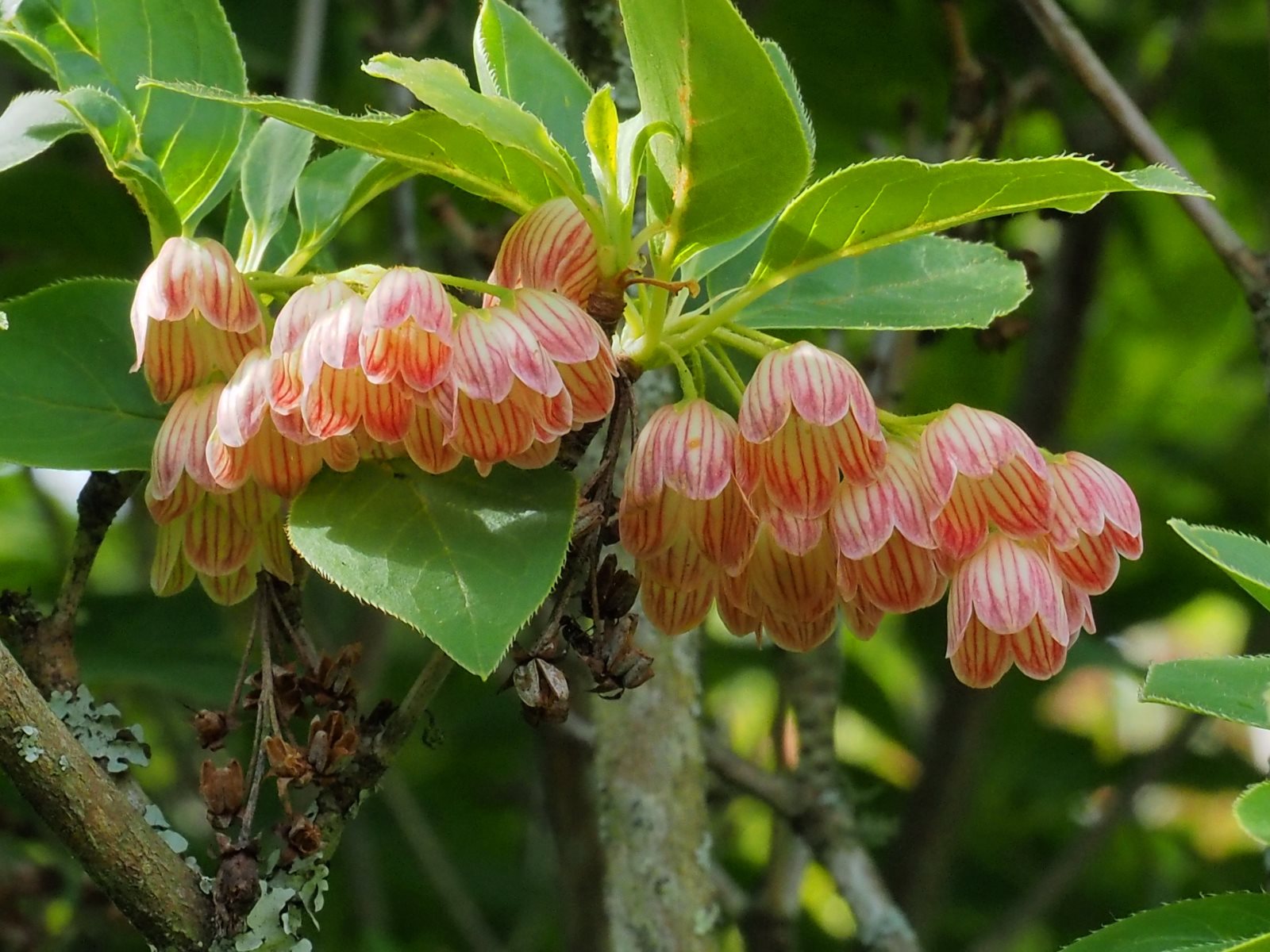
E. camp. ‘Venus’
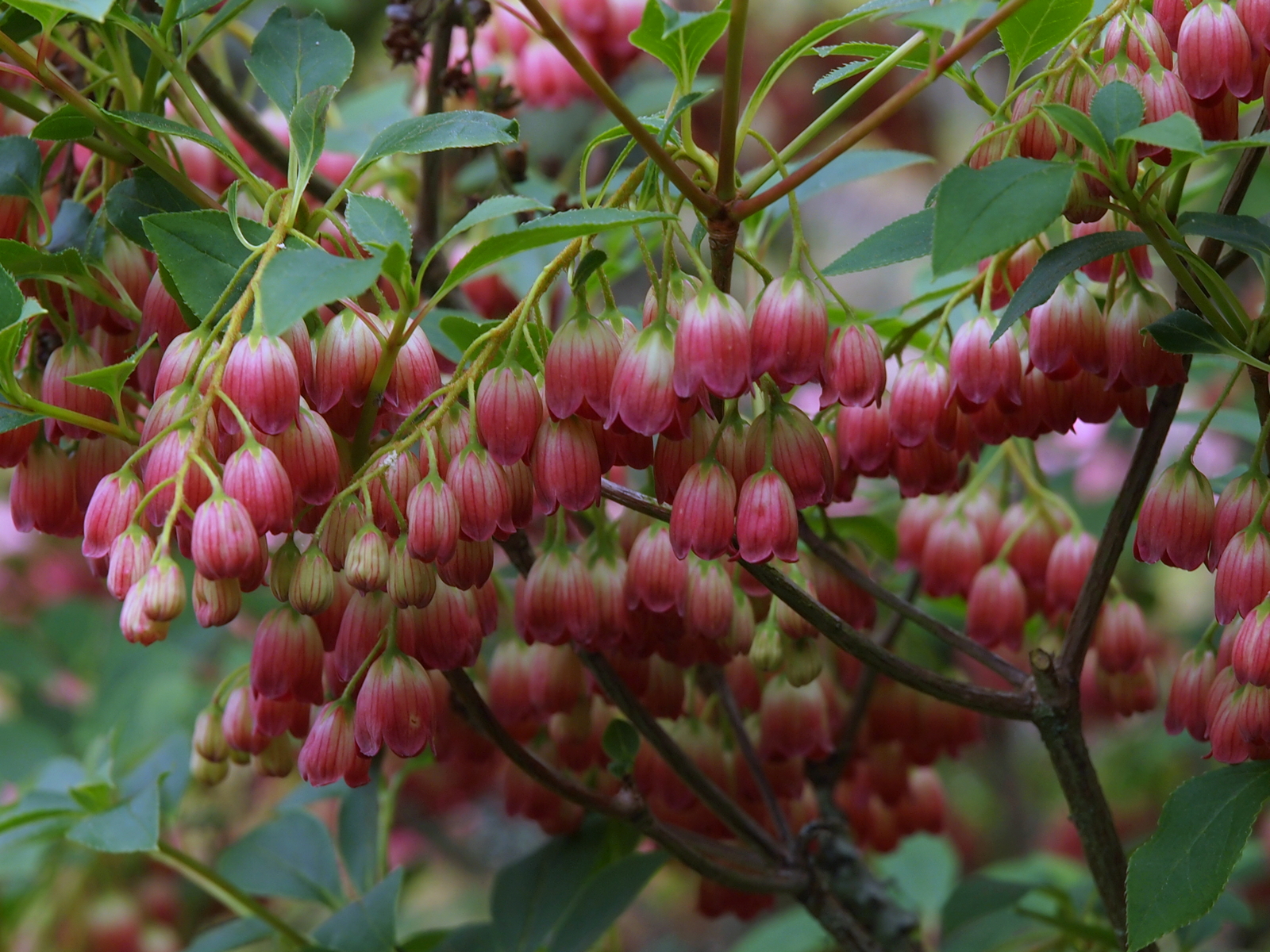
E. camp. ‘Vesta’
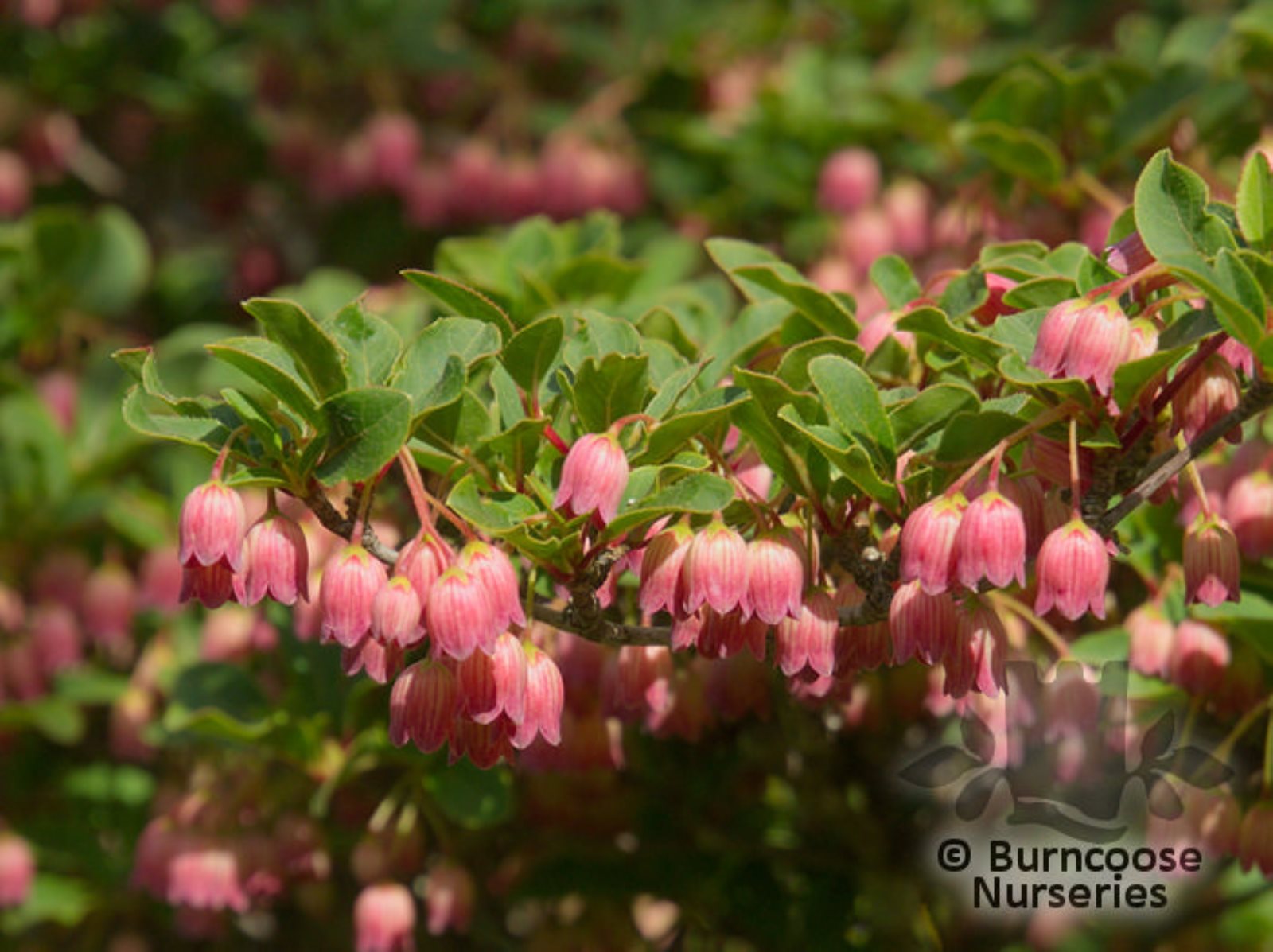
E. camp. ‘Victoria’
5. Autumn Colour
Once you have got over the excitement of the wonderful colours and shapes of Enkianthus flowers there are further treats in store.
All Enkianthus are deciduous and all produce startling autumn colour to rival acers, nyssas, liquidambars or cherries.
E. campanulatus produces a stunning and vibrant autumn display ranging from yellow to orange and crimson.
E. perulatus produces splendid brilliant red autumn colour, sometimes yellowish-orange in milder situations.
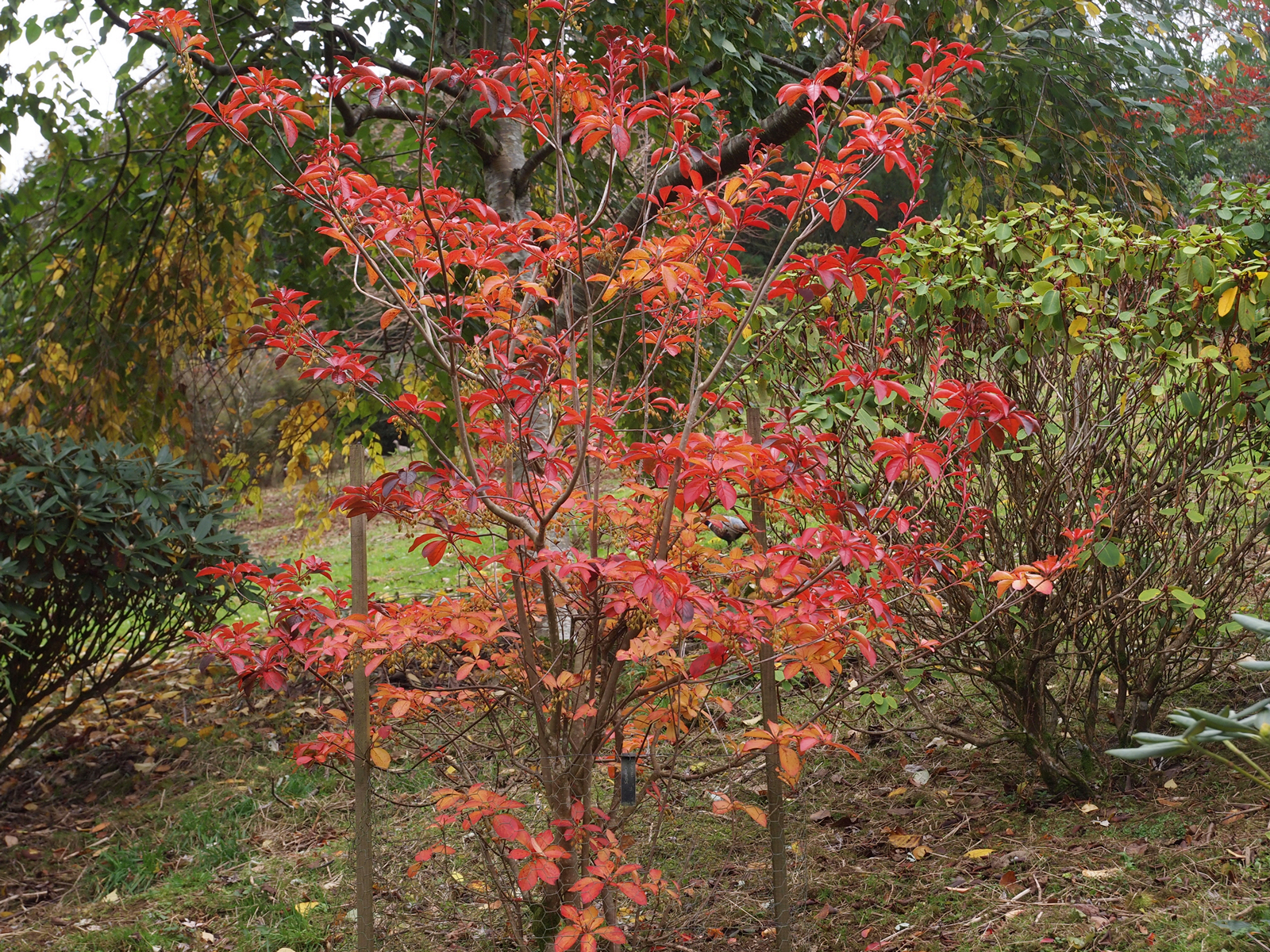
E. albiflorus
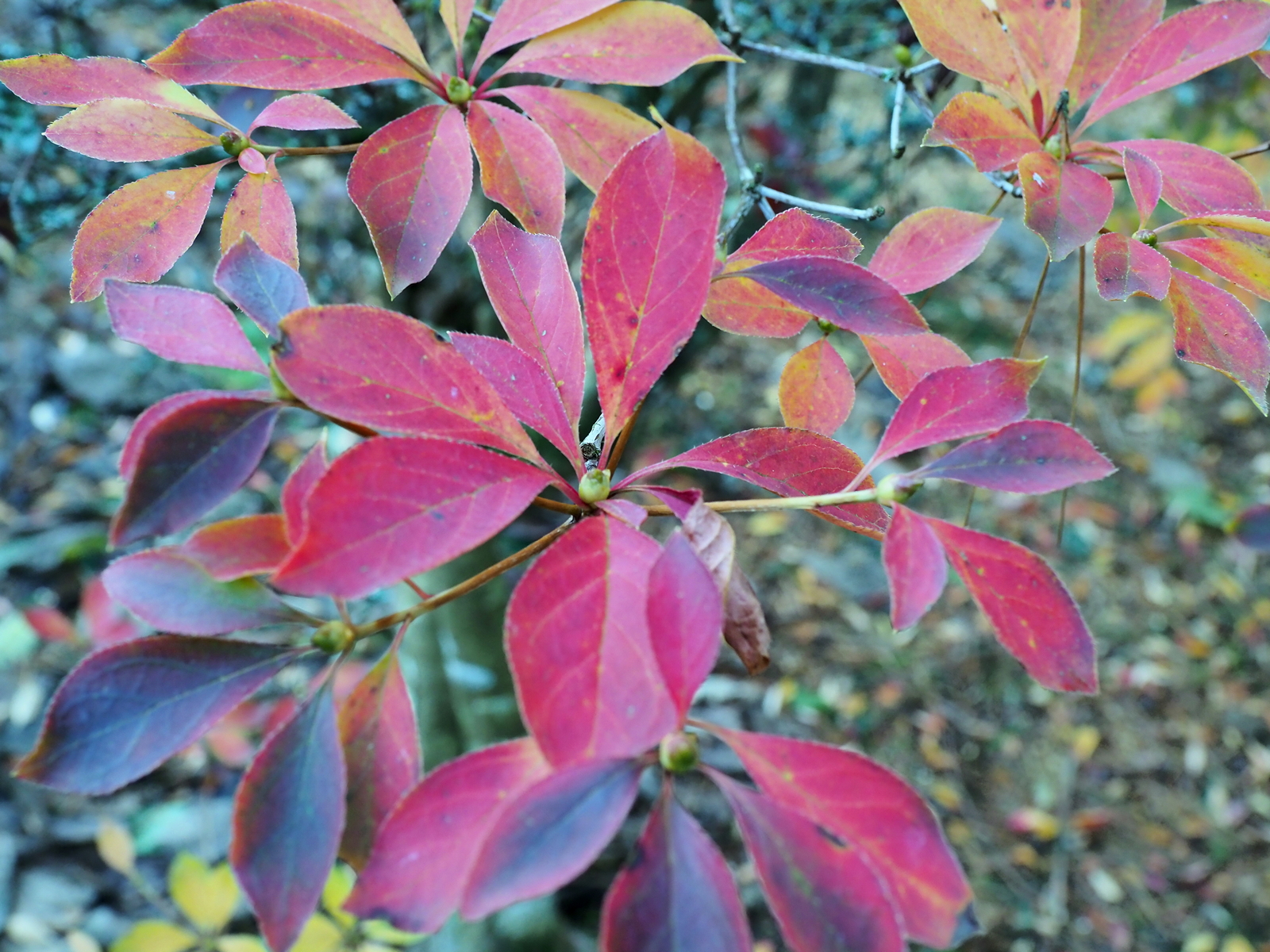
E. deflexus
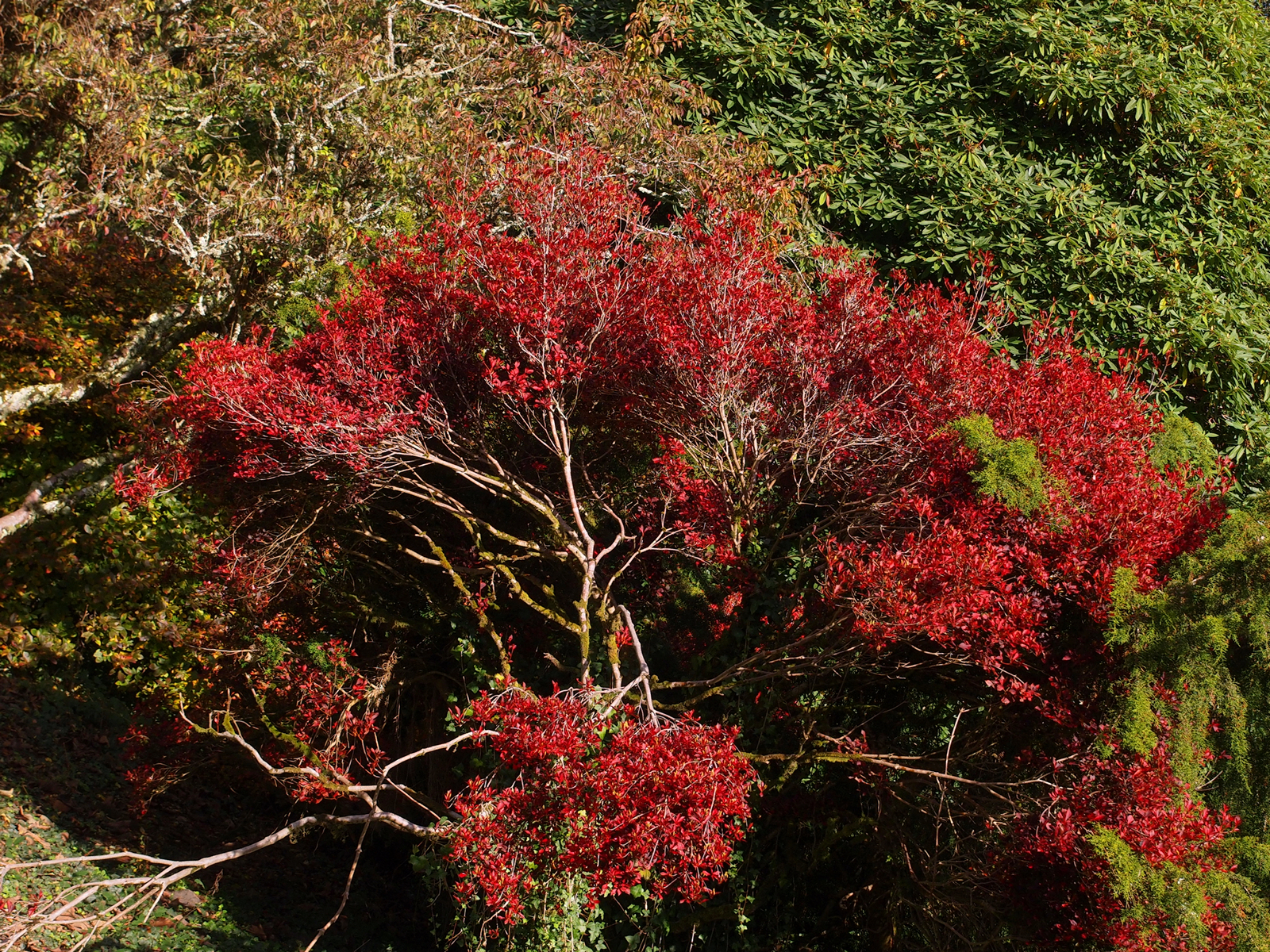
E. perulatus
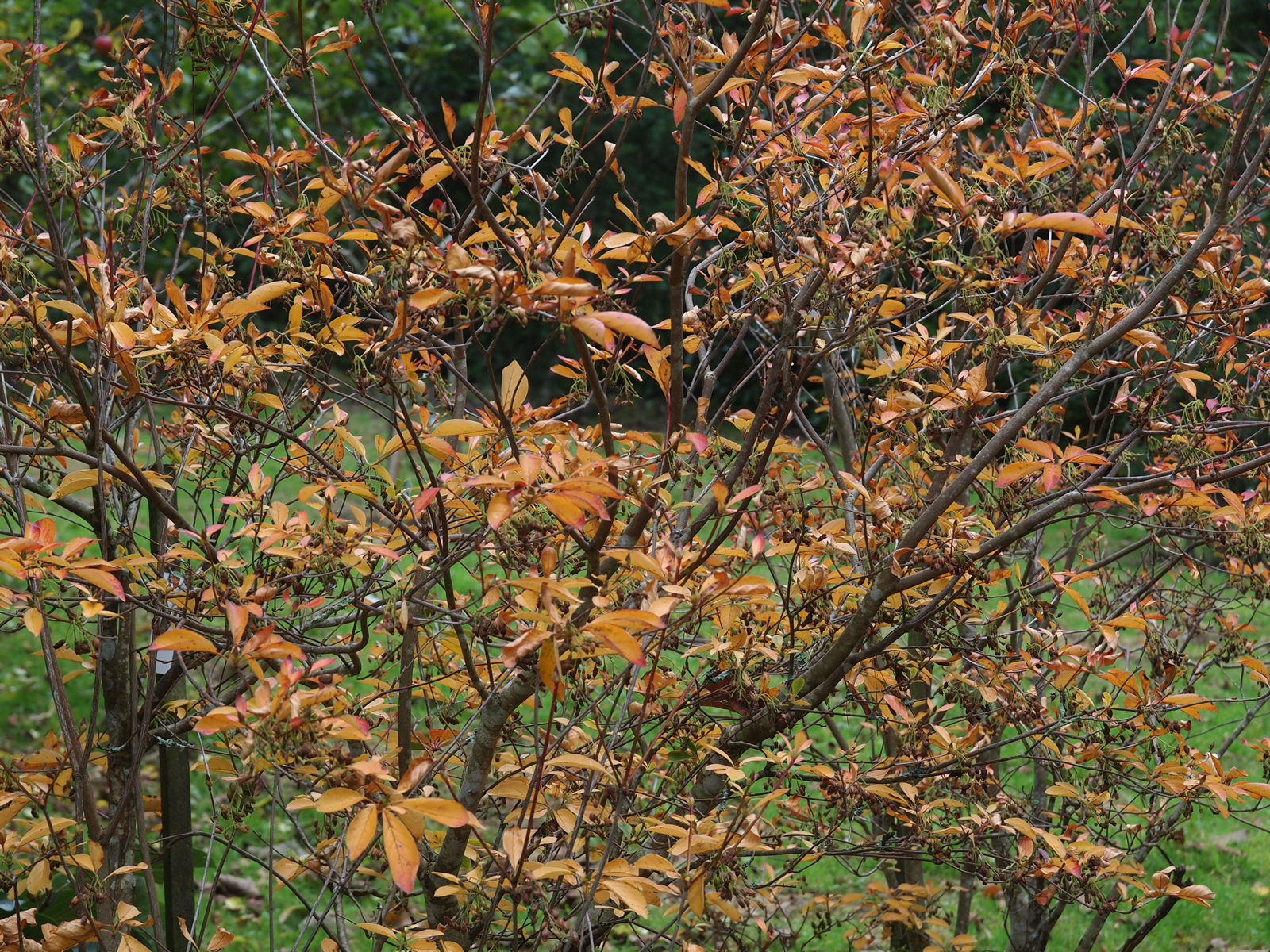
E. camp. ‘Red Bells’
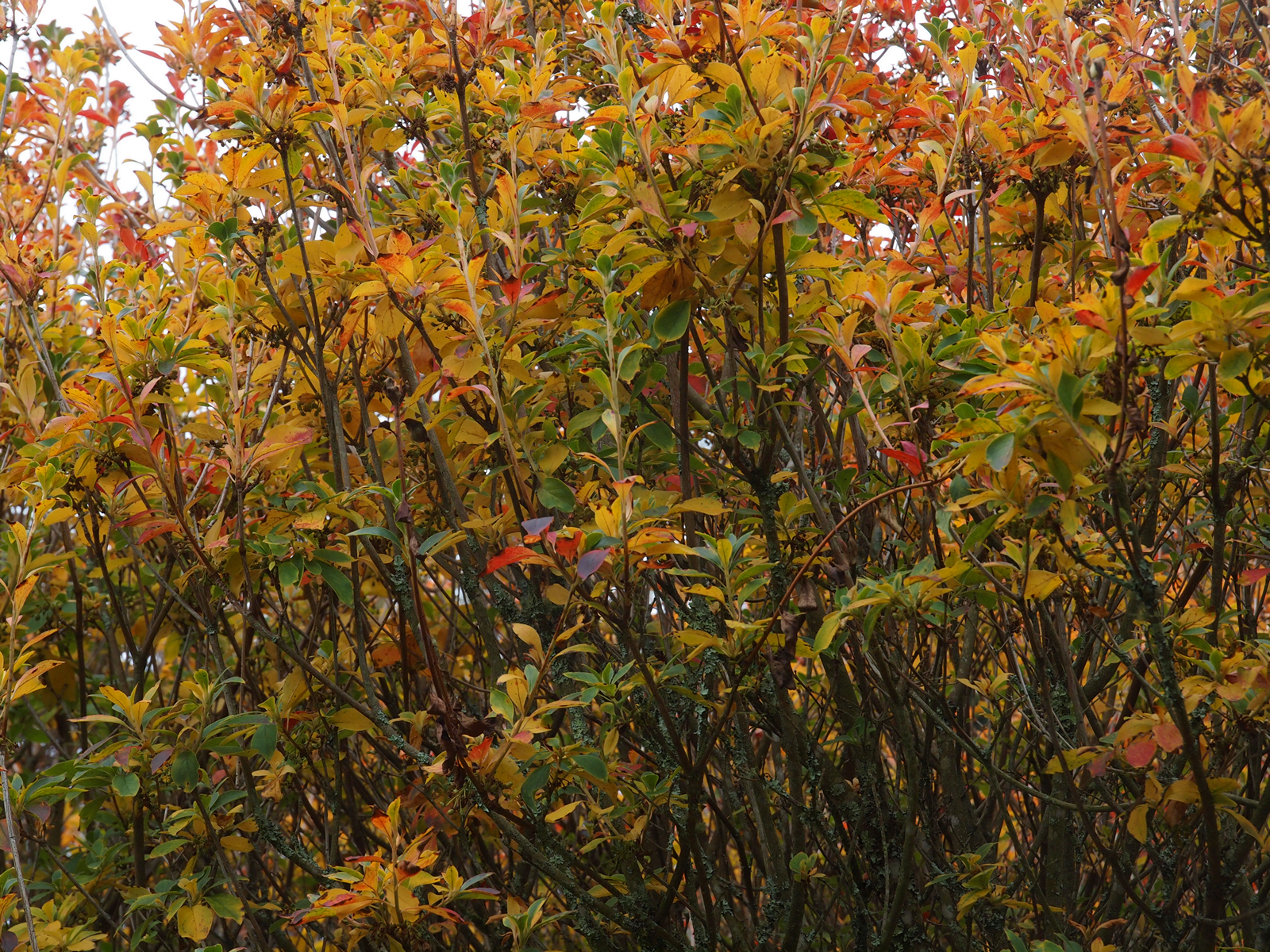
E. camp. ‘Victoria’
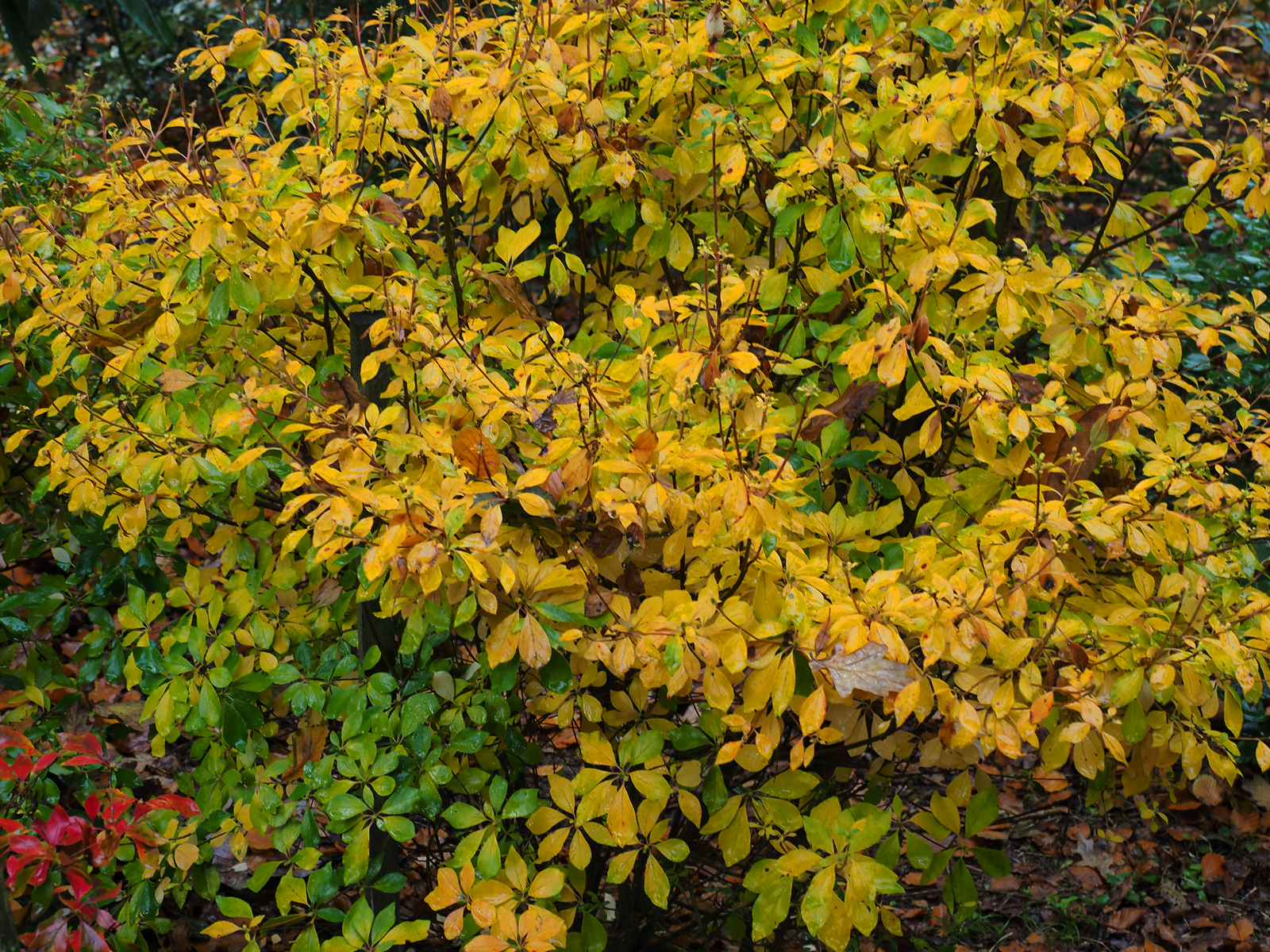
E. camp. ‘Wallaby’
